“Will we witness the wildebeest migration here?” was our unspoken question. We were more than ready for our adventure in Tanzania. Located near the Kenyan border, the Serengeti – one of UNESCO’s World Heritage Sites – is one of Africa’s most popular parks. Sharing the same ecosystem with Maasai Mara, it’s famous not only for the wildebeest migration, but also for the beauty of its endless plain and for the diversity of its flora and fauna.
Days 15, 16, 17: Serengeti National Park
Exactly two weeks into our trip, on a Sunday morning, after Arif, our Kenyan guide, drove us from Hammercop Migration Camp to an airstrip in Maasai Mara, we flew on a small, 12-passanger airplane for 18 minutes, then were driven 30 kilometers in a minibus to the Tanzanian border. After experiencing some chaos around the baggage screening there, we got our passports stamped, and continued driving to a nearby airstrip. After a delayed take-off (our names were not on the passanger list) and after a 15-minute flight, we finally found ourselves in the middle of the Serengeti. If there was a direct border crossing between the two countries, we could have been there in no time. But it was still only noon.
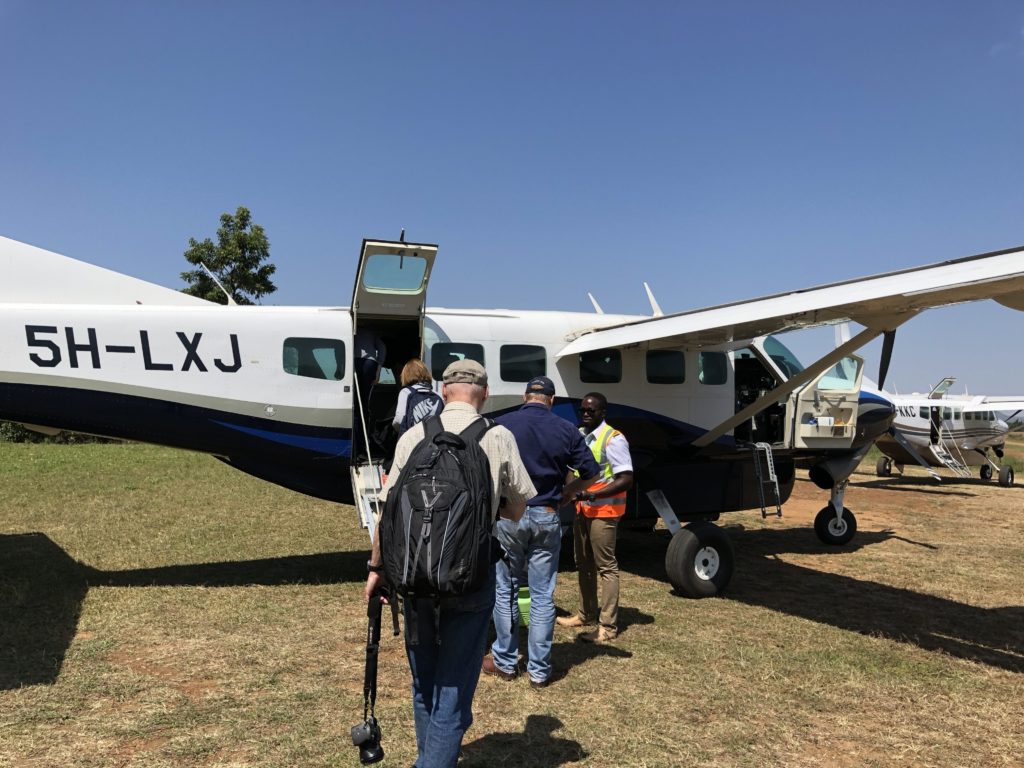
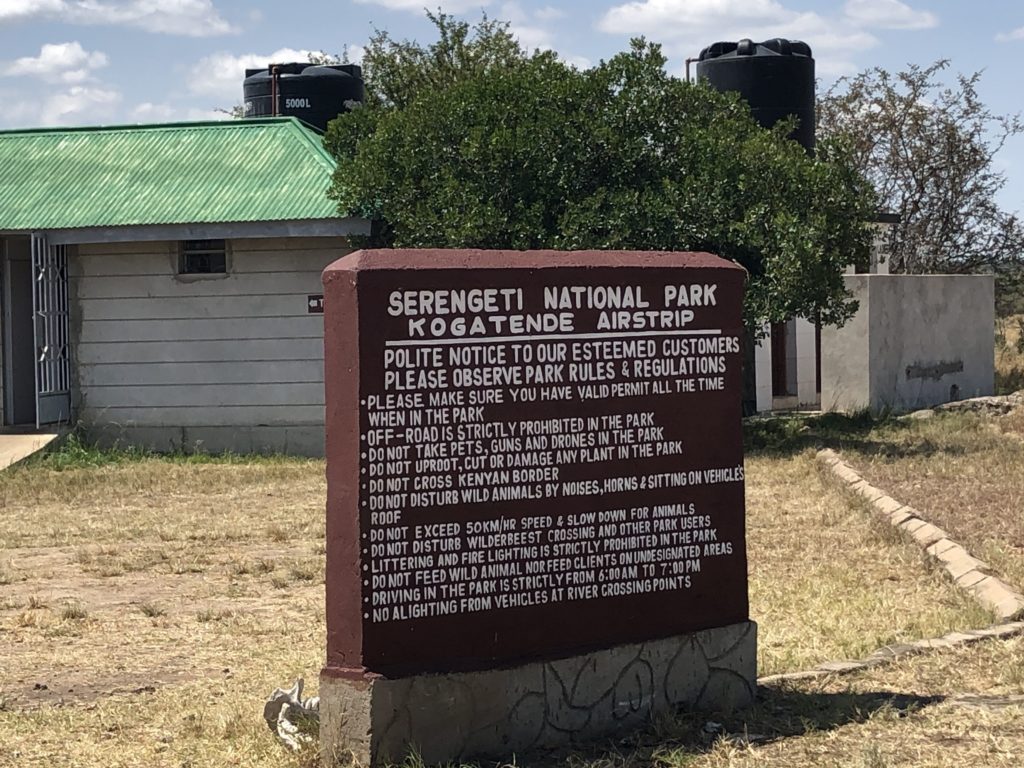 When I saw our new safari vehicle with its open roof and place between the seats for standing and wildlife viewing, and when our new driver-guide, Seph, pulled out a map of the Serengeti and explained his plan for our safari, I got a very good feeling regarding the days ahead. “We are starting our afternoon game drive right now,” he said. “I have box lunches for us. We will have our picnic in the bush, and around sunset we will find our tented camp.”
When I saw our new safari vehicle with its open roof and place between the seats for standing and wildlife viewing, and when our new driver-guide, Seph, pulled out a map of the Serengeti and explained his plan for our safari, I got a very good feeling regarding the days ahead. “We are starting our afternoon game drive right now,” he said. “I have box lunches for us. We will have our picnic in the bush, and around sunset we will find our tented camp.”
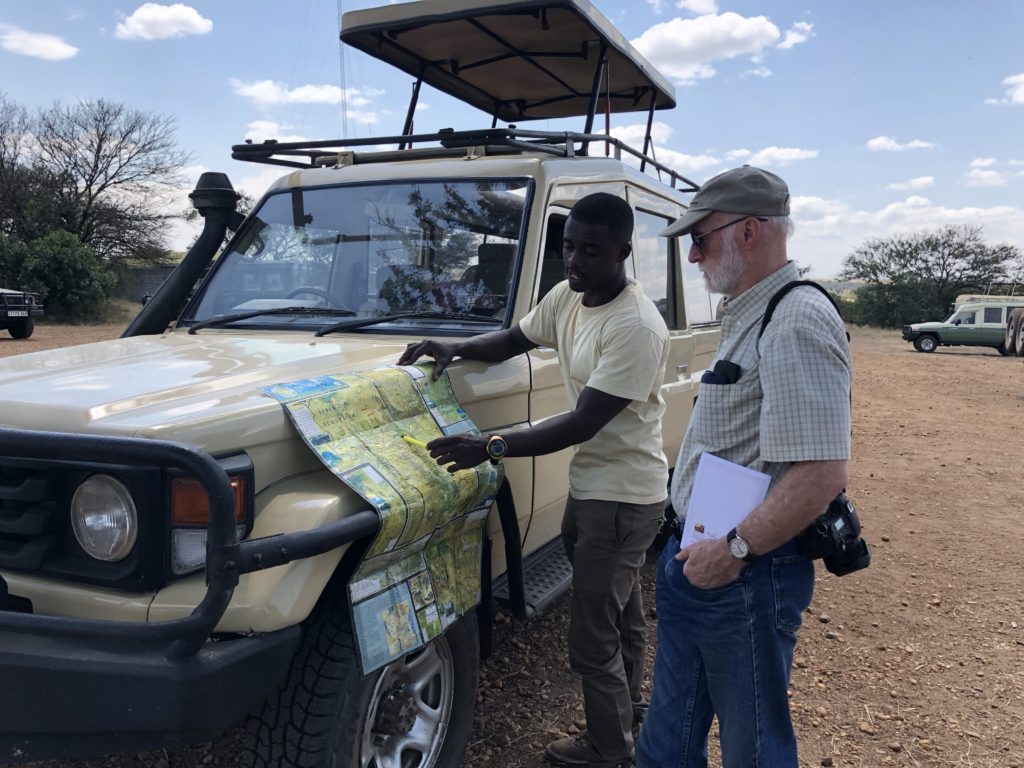 It was hot. We were a little bit surprised and tired from traveling, but also eager to start exploring the Park. But first, we needed to change into our comfortable safari clothing.
It was hot. We were a little bit surprised and tired from traveling, but also eager to start exploring the Park. But first, we needed to change into our comfortable safari clothing.
Seph turned out to be a wonderful, experienced, and most importantly, enthusiastic guide who kindly shared with us his knowledge and expertise about the Serengeti. I was amazed how he and Steve shared their mutual love and excitement about birds. Our safari with him wasn’t only about the big animals that everyone wants to see in Africa, it was about experiencing the peacefulness, the different thinking, the no stress, no rushing attitude of the place. It was about stopping to see every single bird, big or small, and every visible lizard.
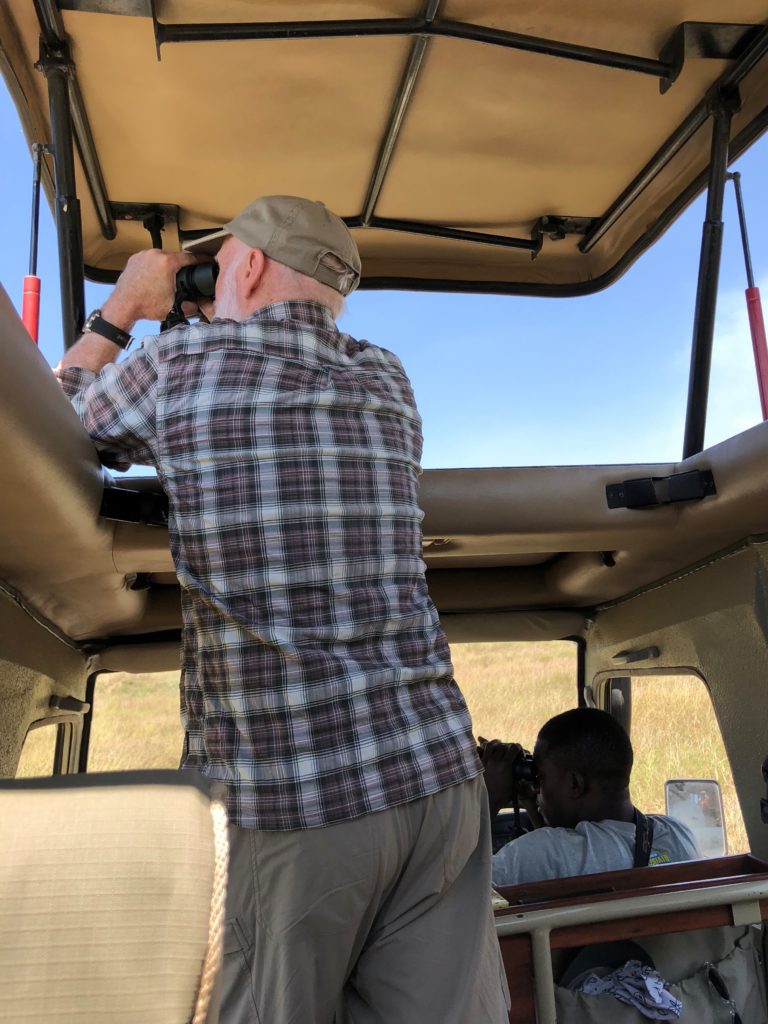
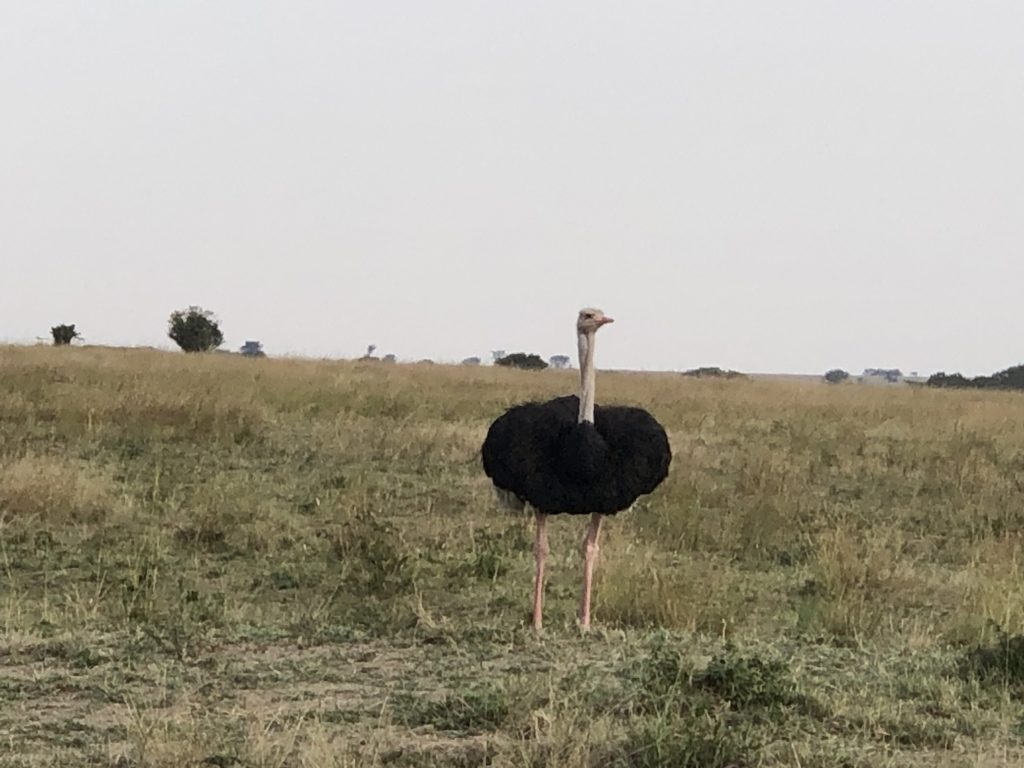
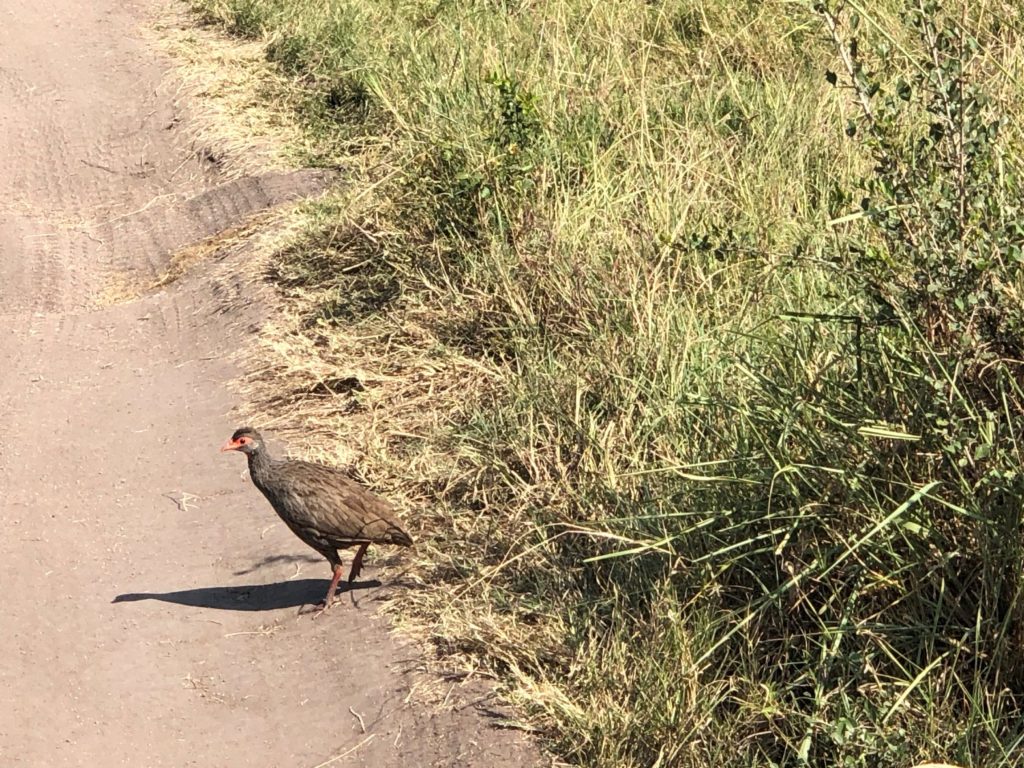
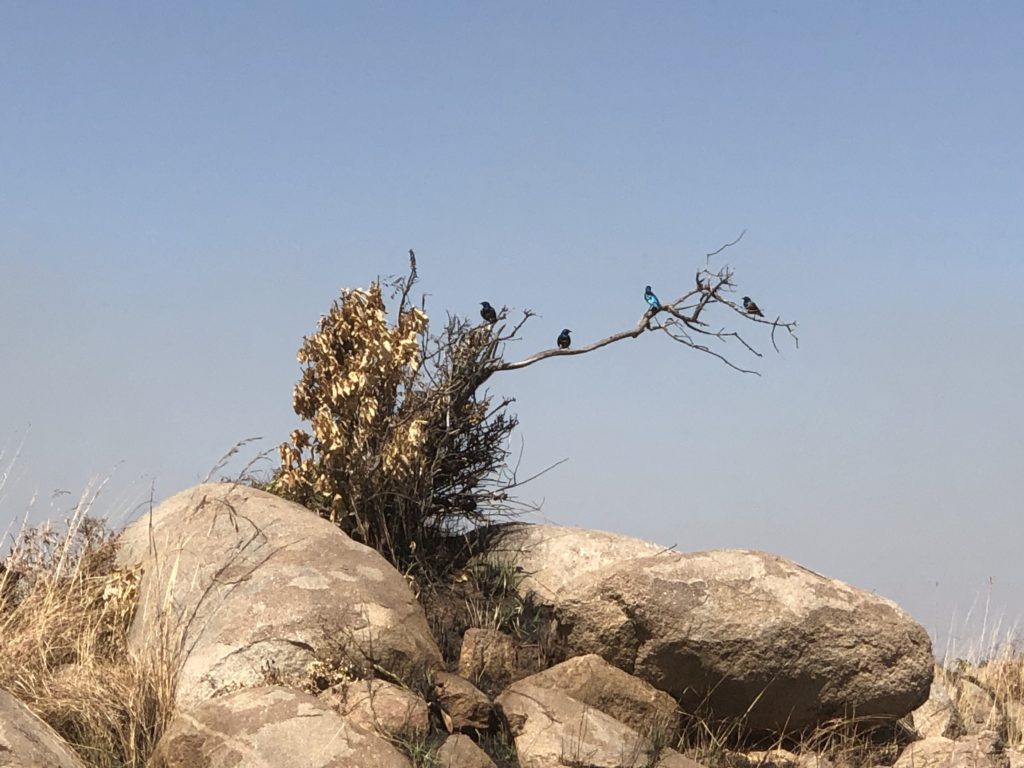
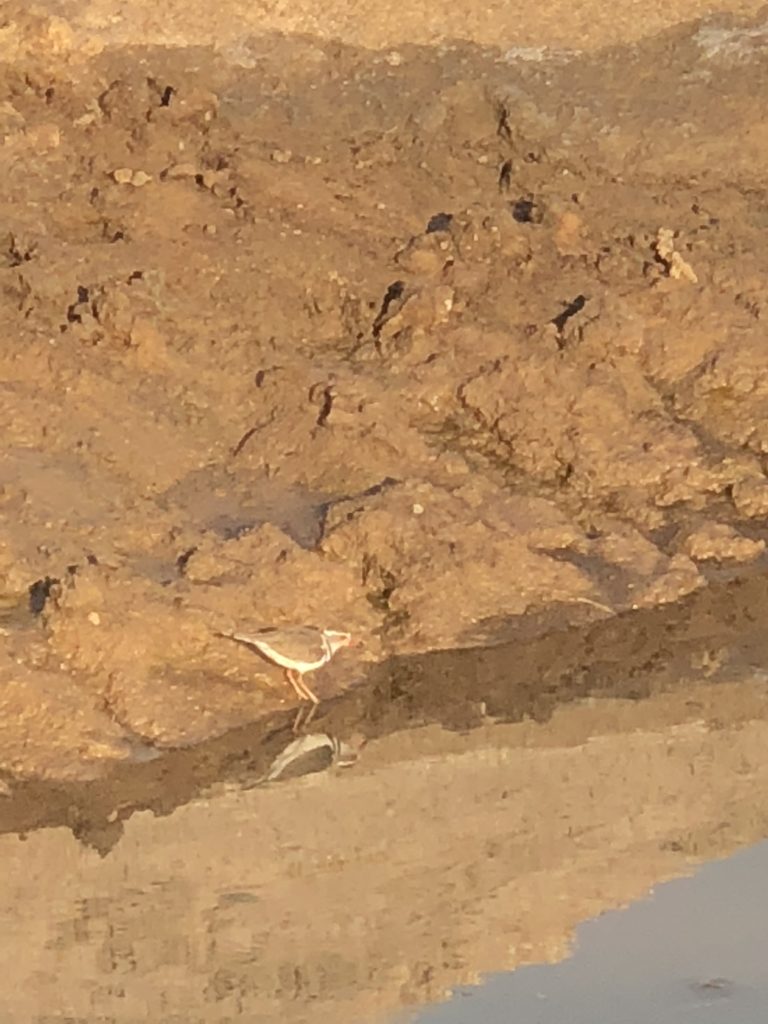
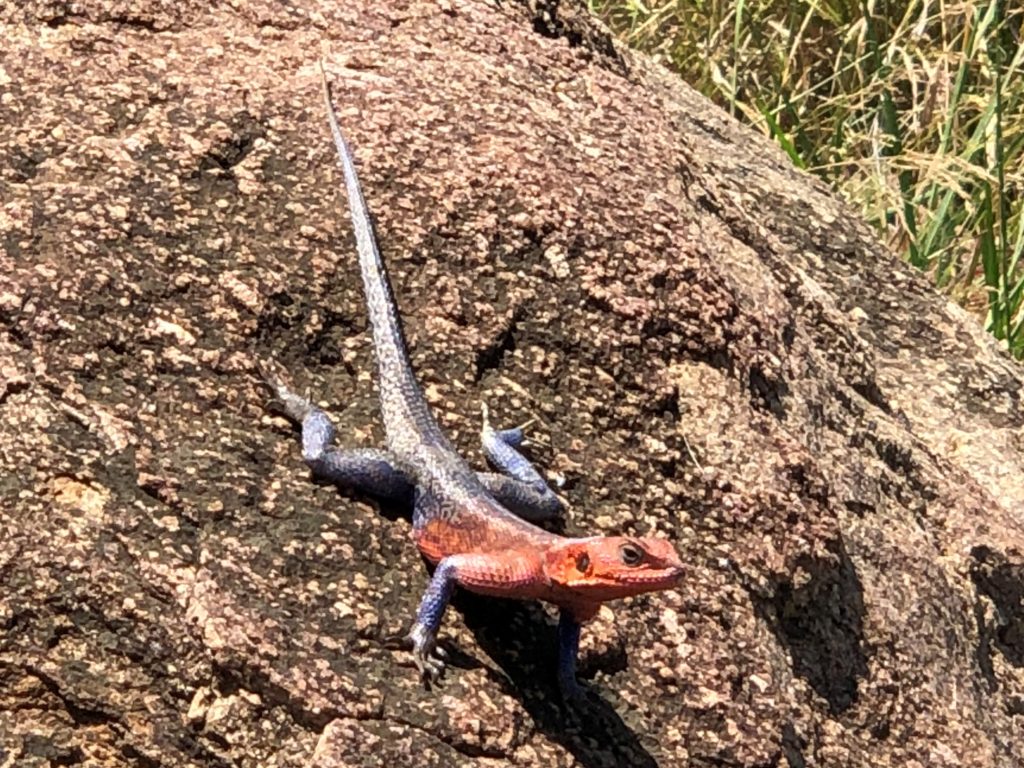 Getting big high-fives from Seph – accompanied with his signature big smile – after successfully identifying a certain bird, or unexpectedly finding lions under some trees, or seeing the other exciting wildlife, added an extra layer to our experience.
Getting big high-fives from Seph – accompanied with his signature big smile – after successfully identifying a certain bird, or unexpectedly finding lions under some trees, or seeing the other exciting wildlife, added an extra layer to our experience.
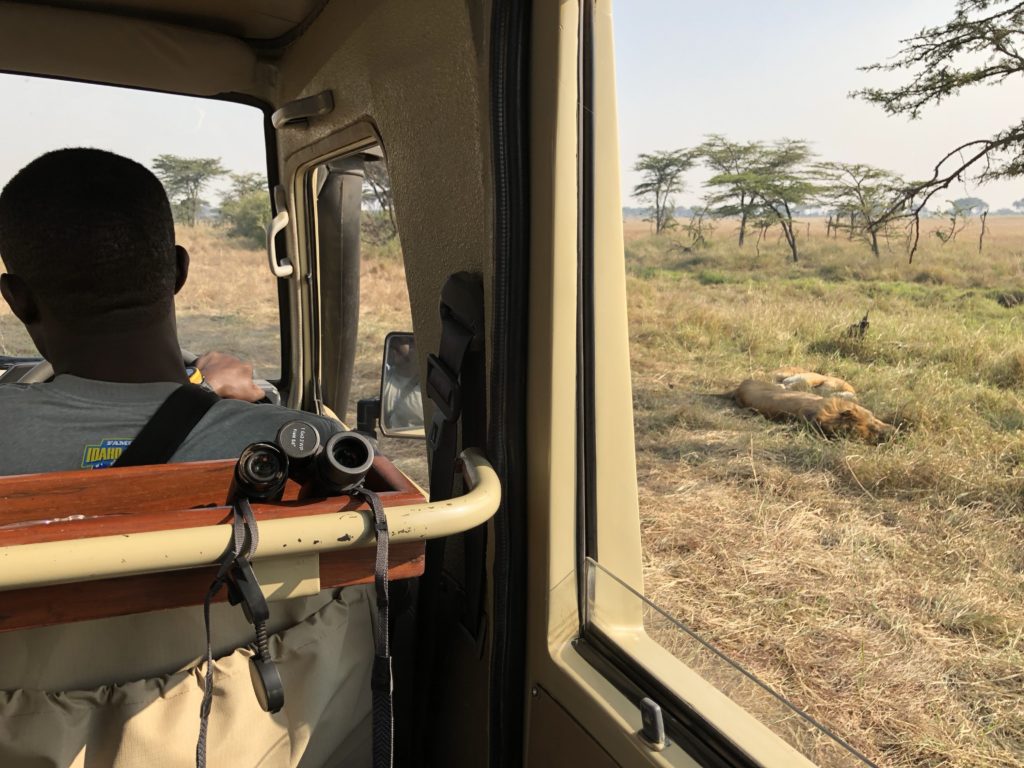

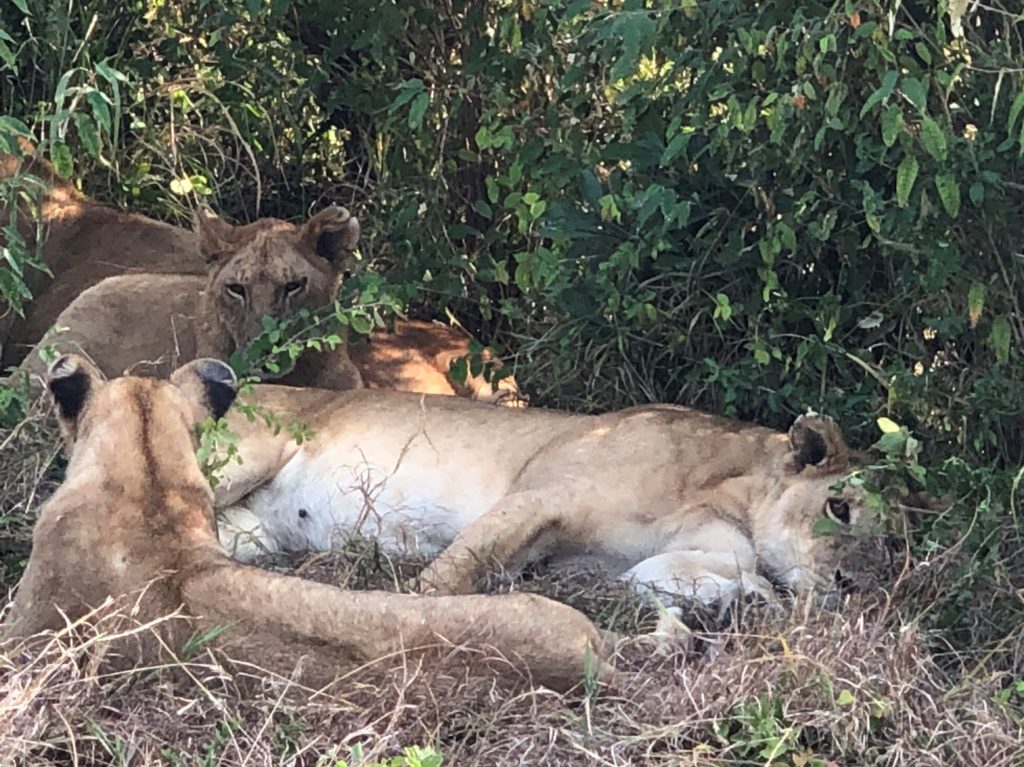
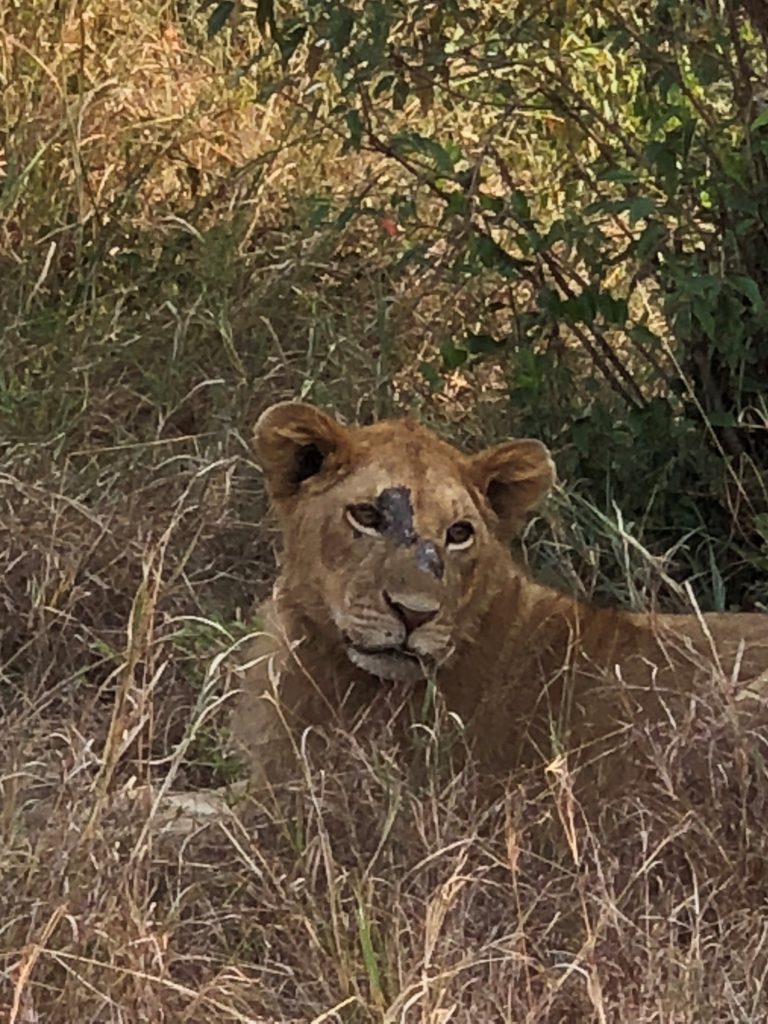
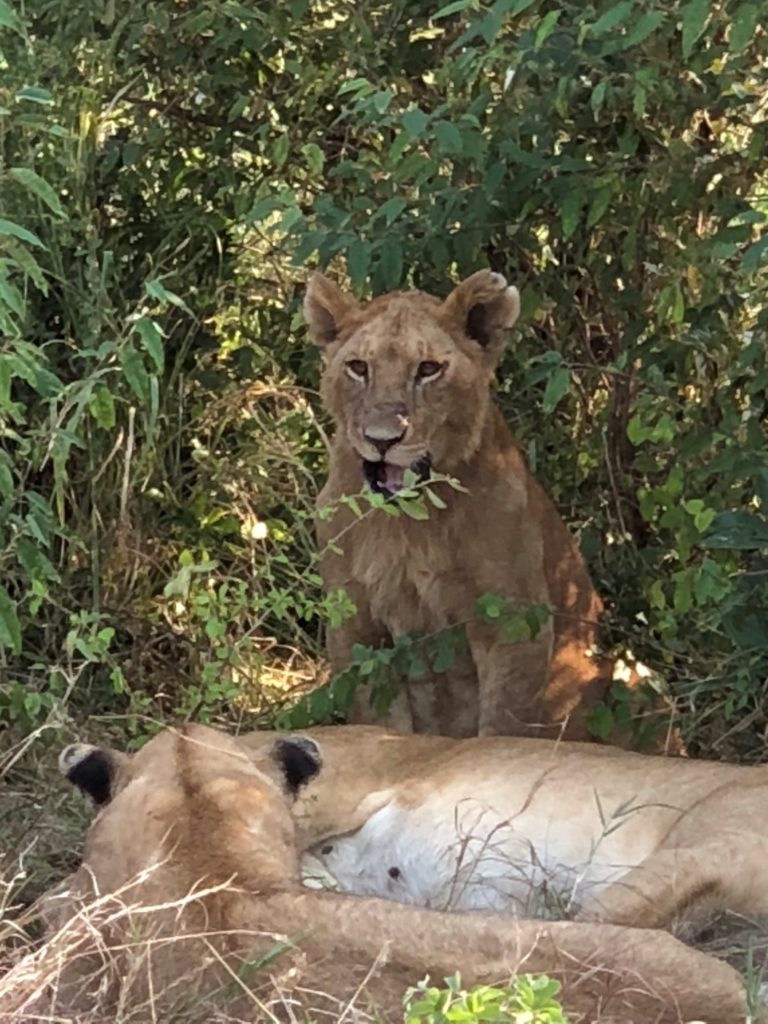
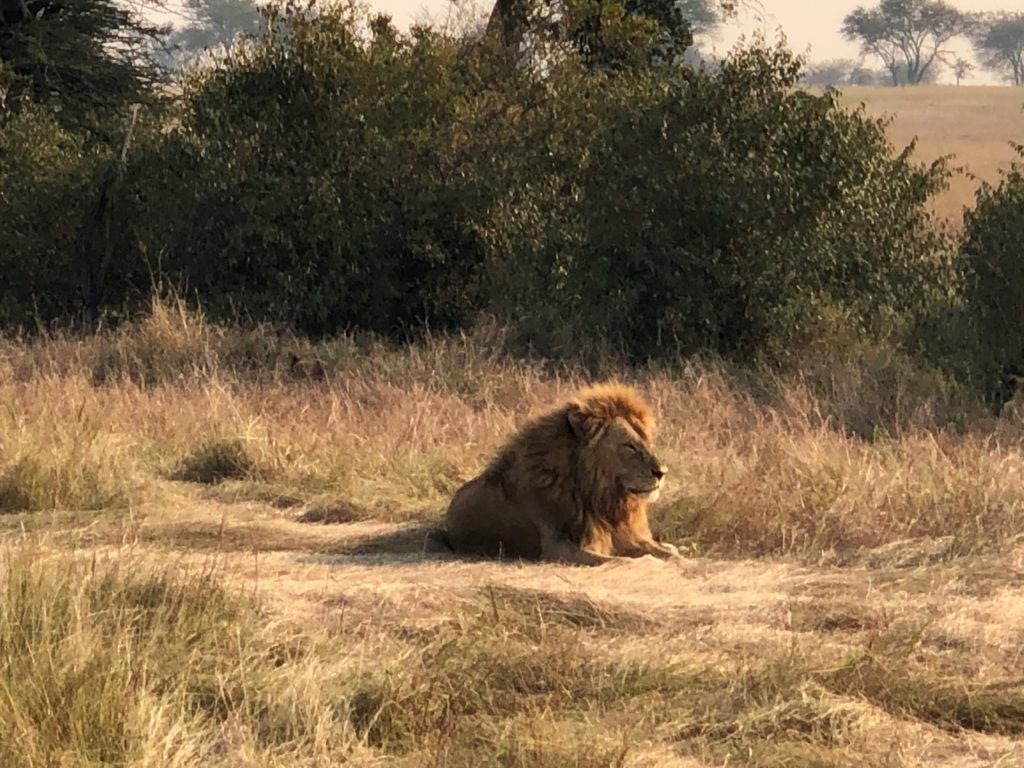
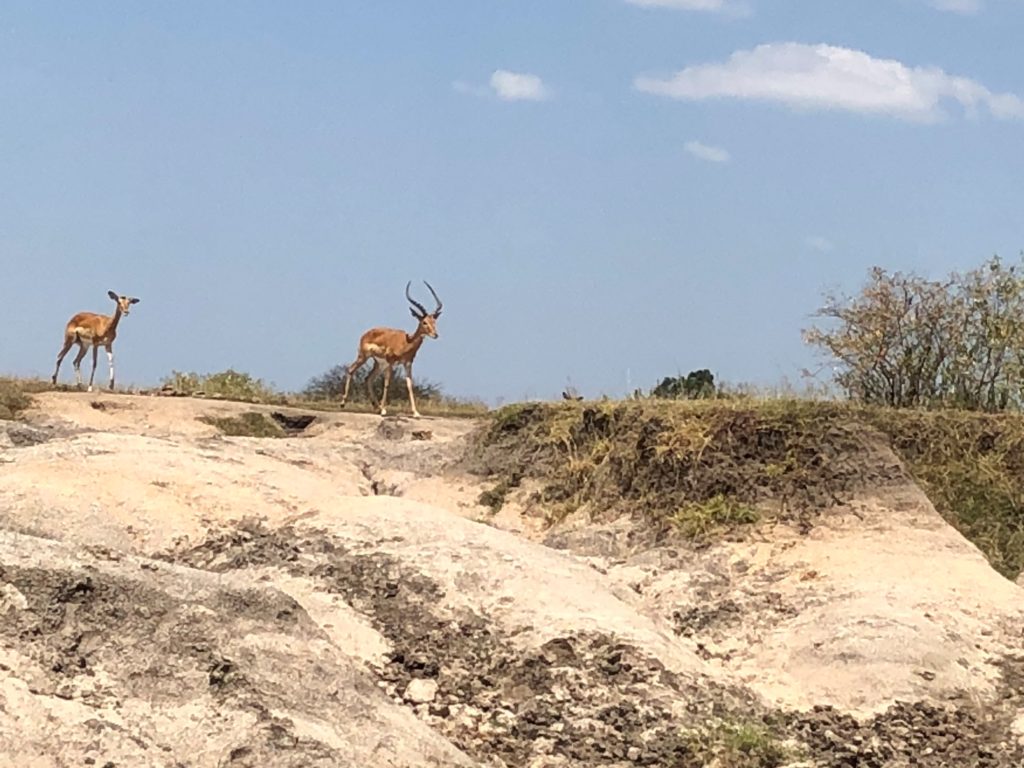
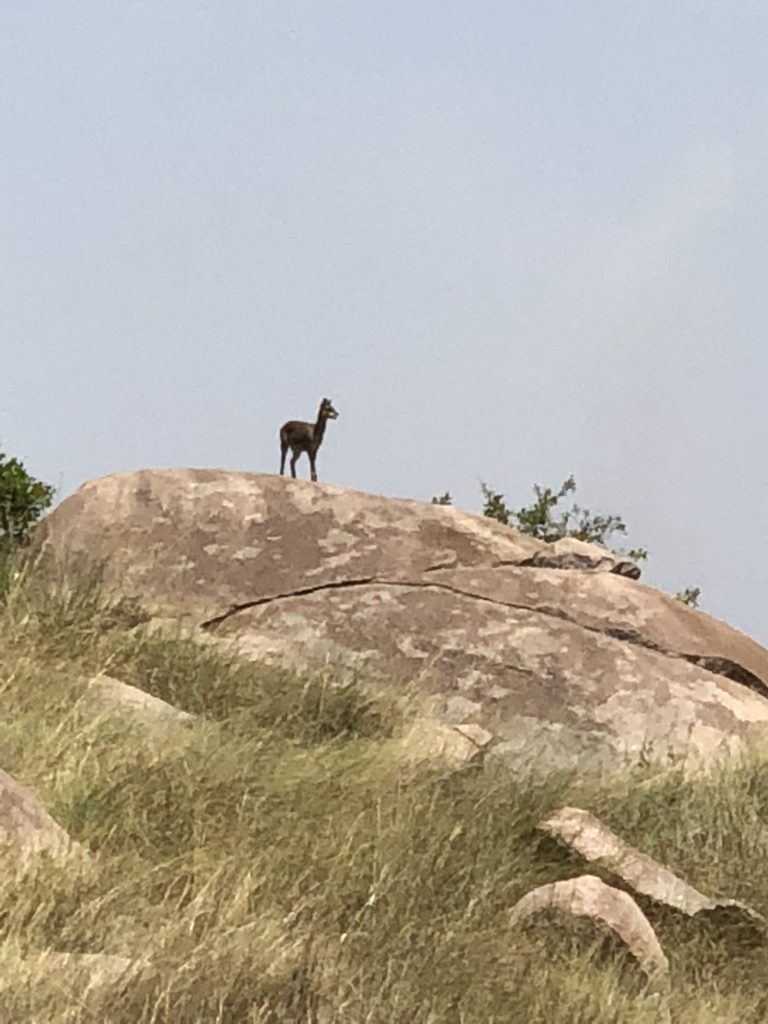 We violated the no rushing philosophy only twice, when on the second day here, we witnessed the first river crossings of this year’s wildebeest migration. Yes, we did see it! Not only one, but two of the first crossings on the Mara River. To experience this most impressive natural event is fascinating. I will try to write more about it in a separate blog post.
We violated the no rushing philosophy only twice, when on the second day here, we witnessed the first river crossings of this year’s wildebeest migration. Yes, we did see it! Not only one, but two of the first crossings on the Mara River. To experience this most impressive natural event is fascinating. I will try to write more about it in a separate blog post.
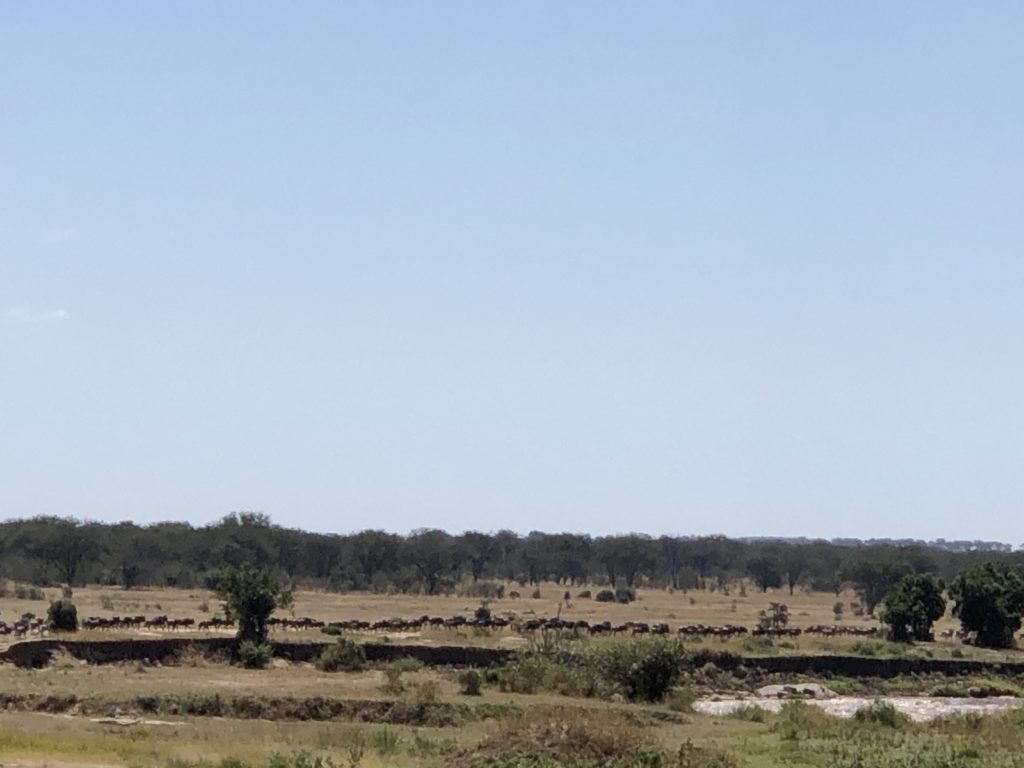
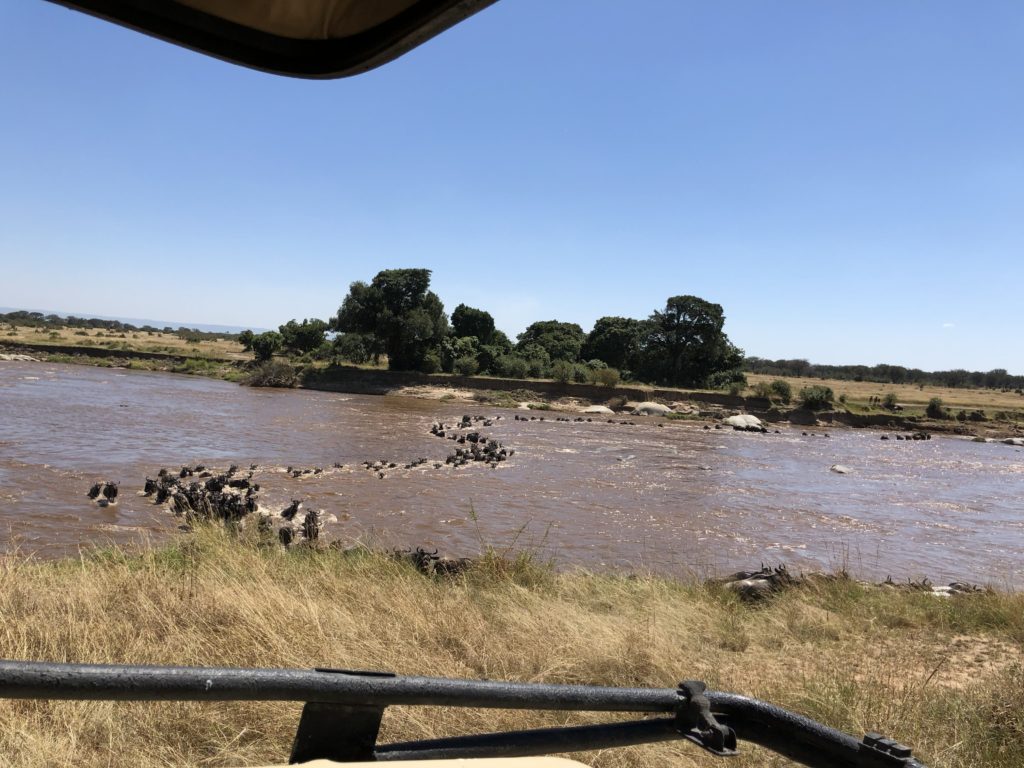 We loved the landscape: the grassland, the woodlands dotted with trees, the river, the riverside forest, the endless open road, the sky, the sunrise, and the sunset.
We loved the landscape: the grassland, the woodlands dotted with trees, the river, the riverside forest, the endless open road, the sky, the sunrise, and the sunset.
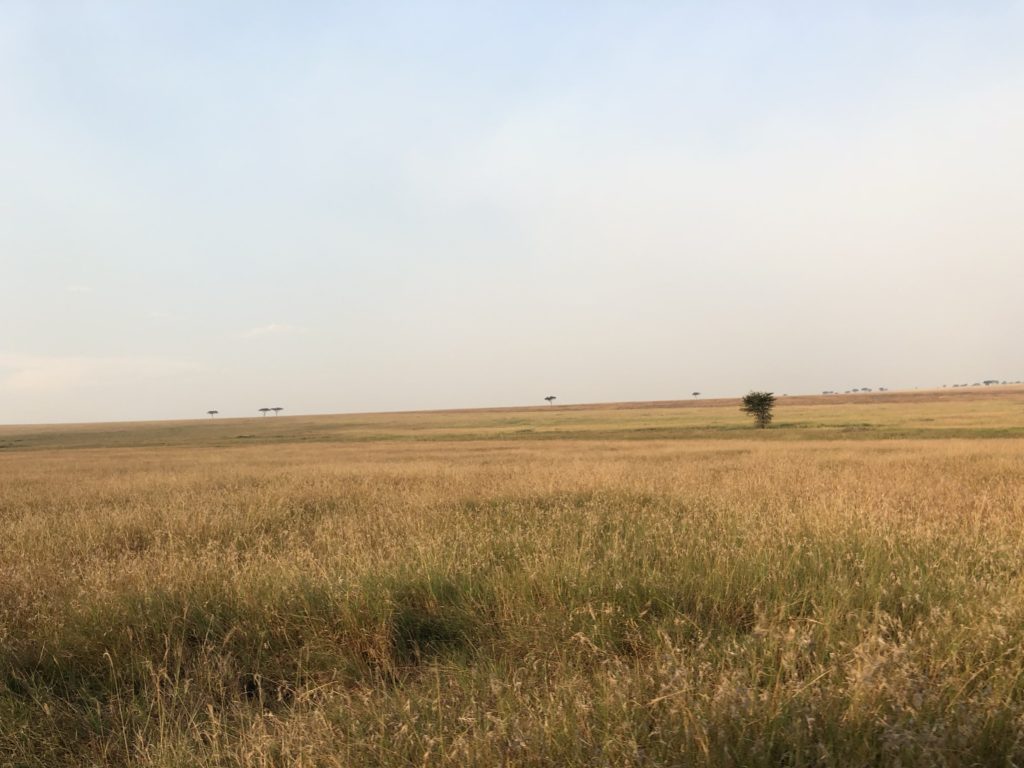
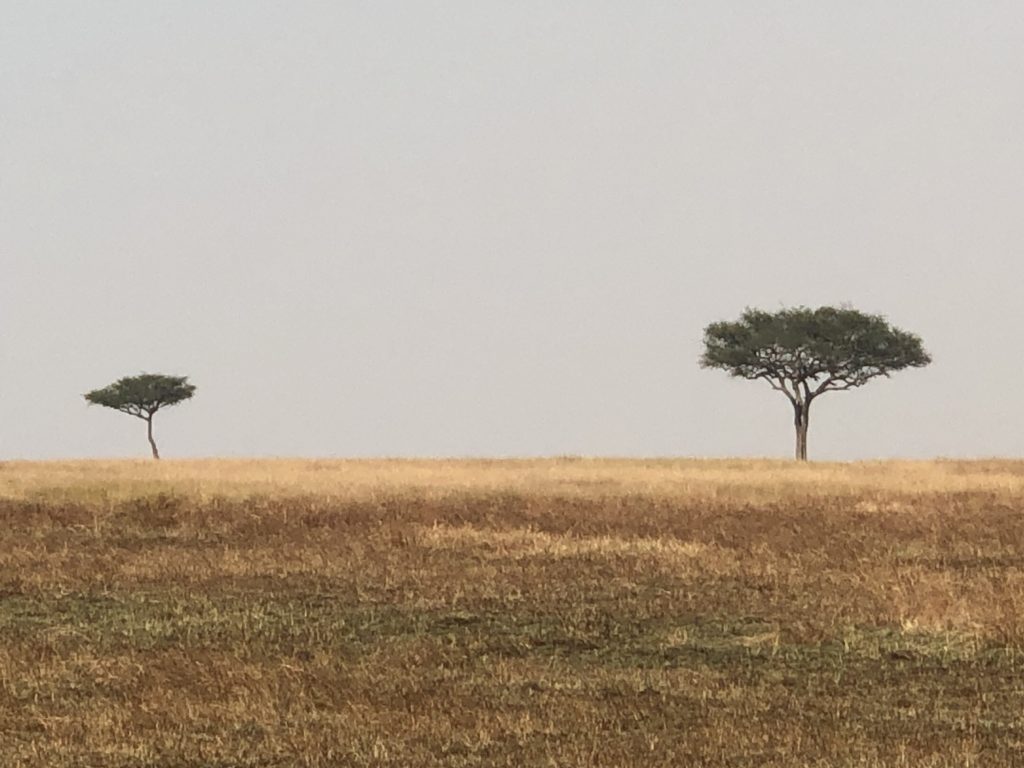
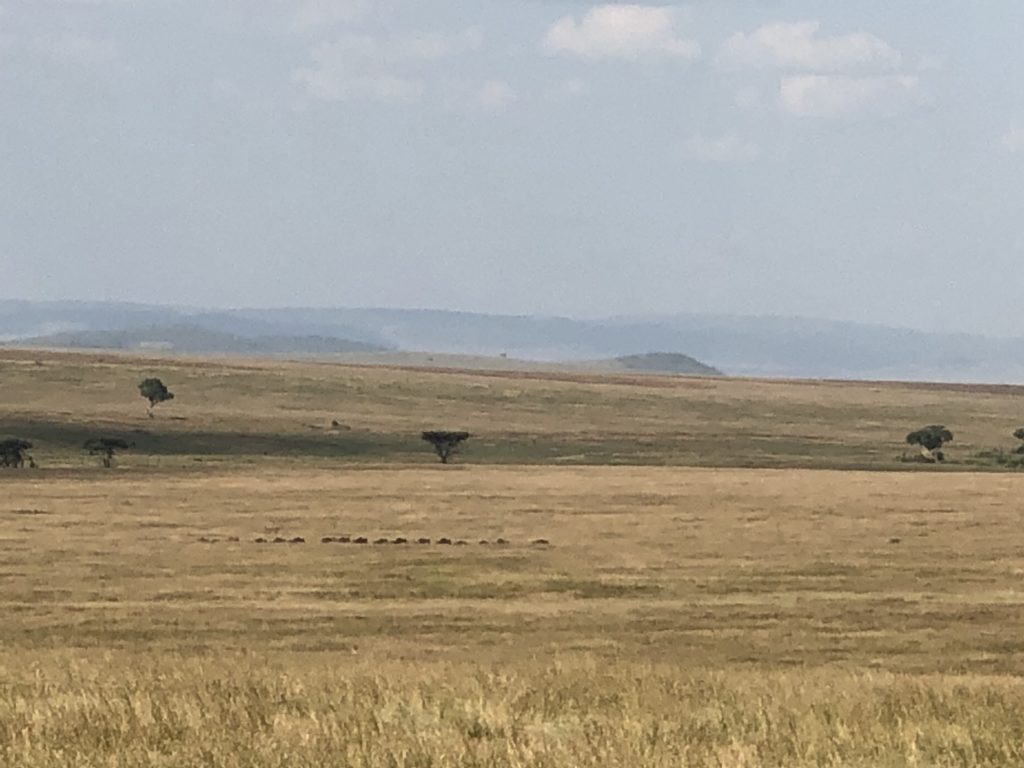
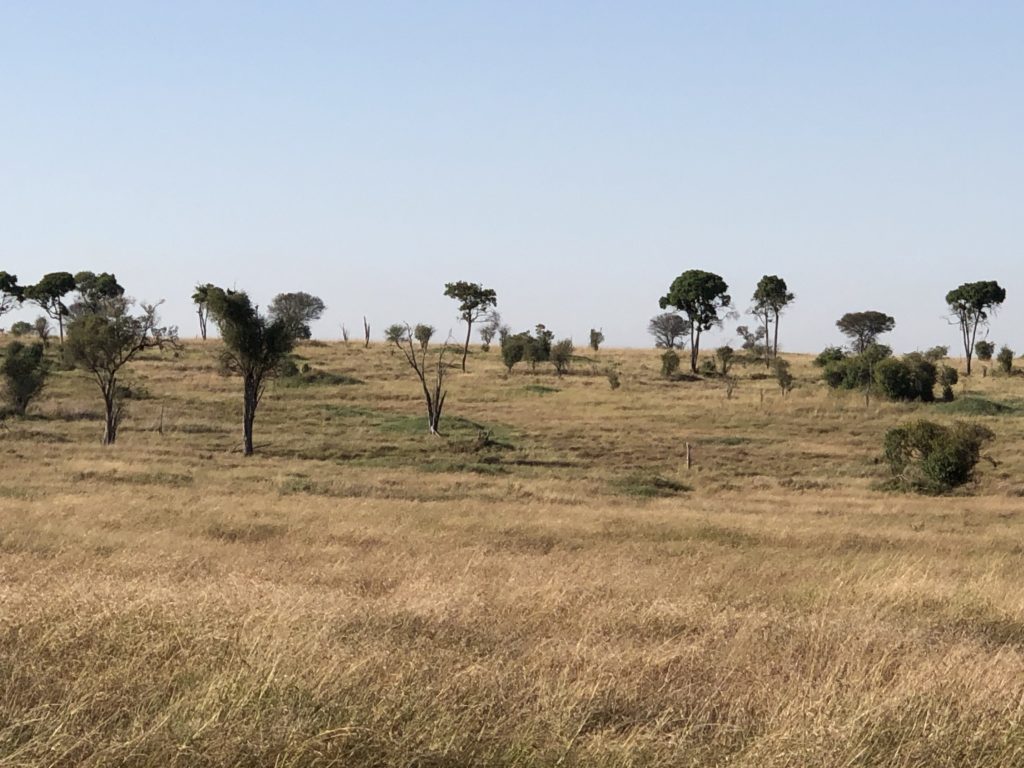
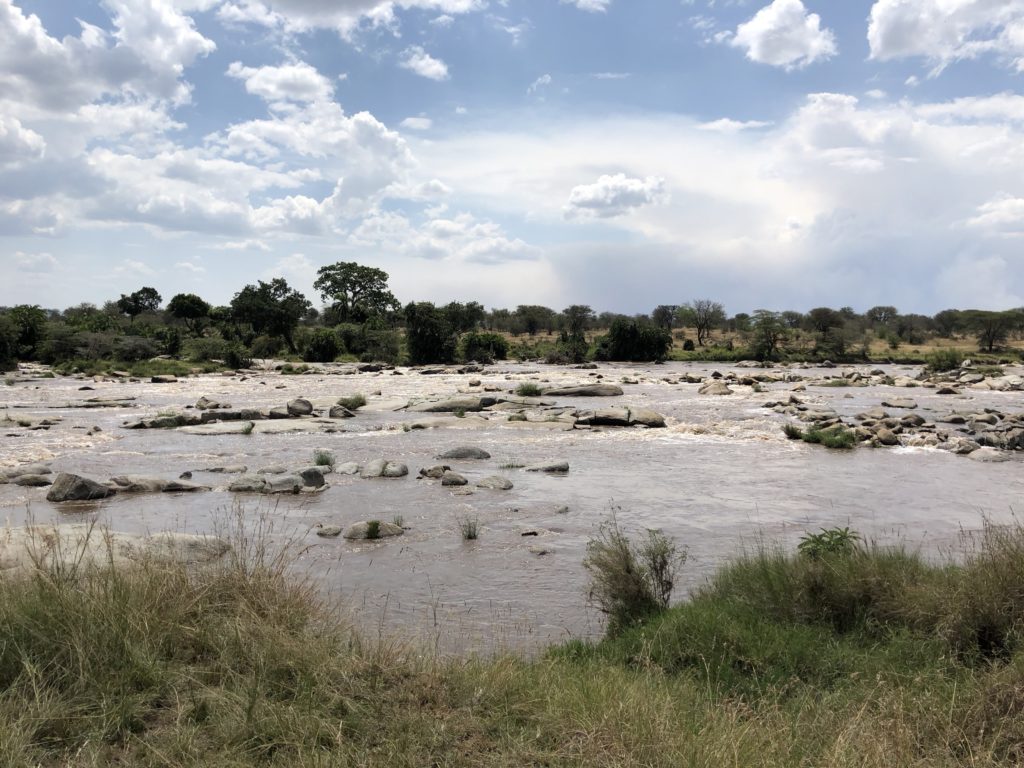
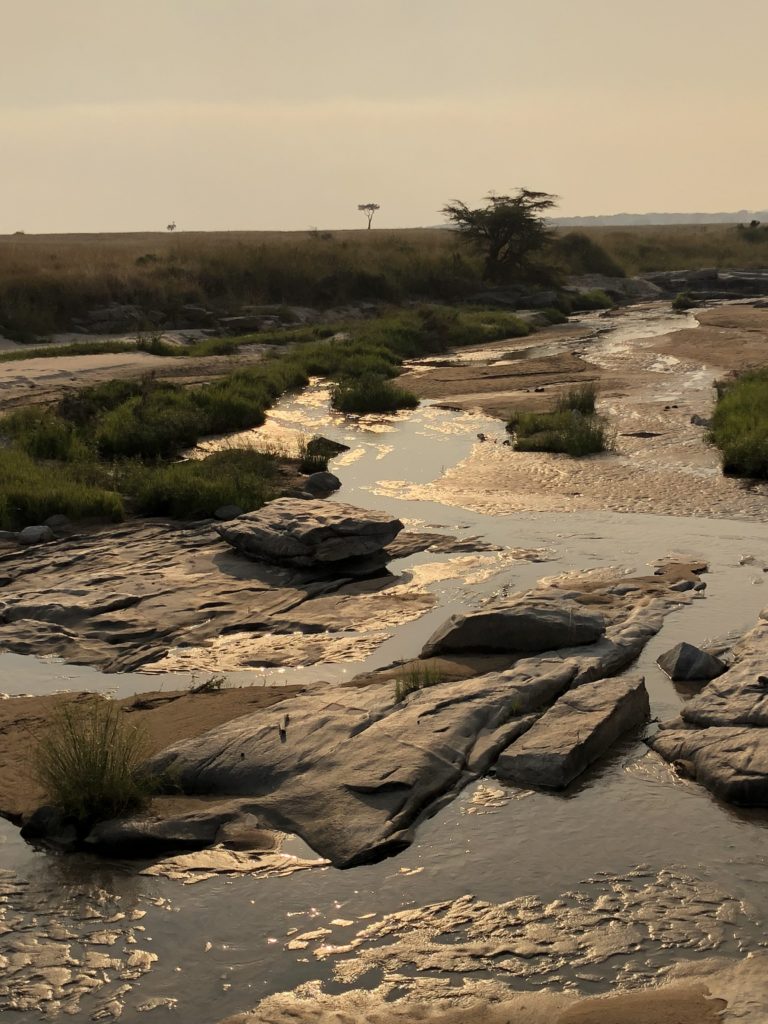
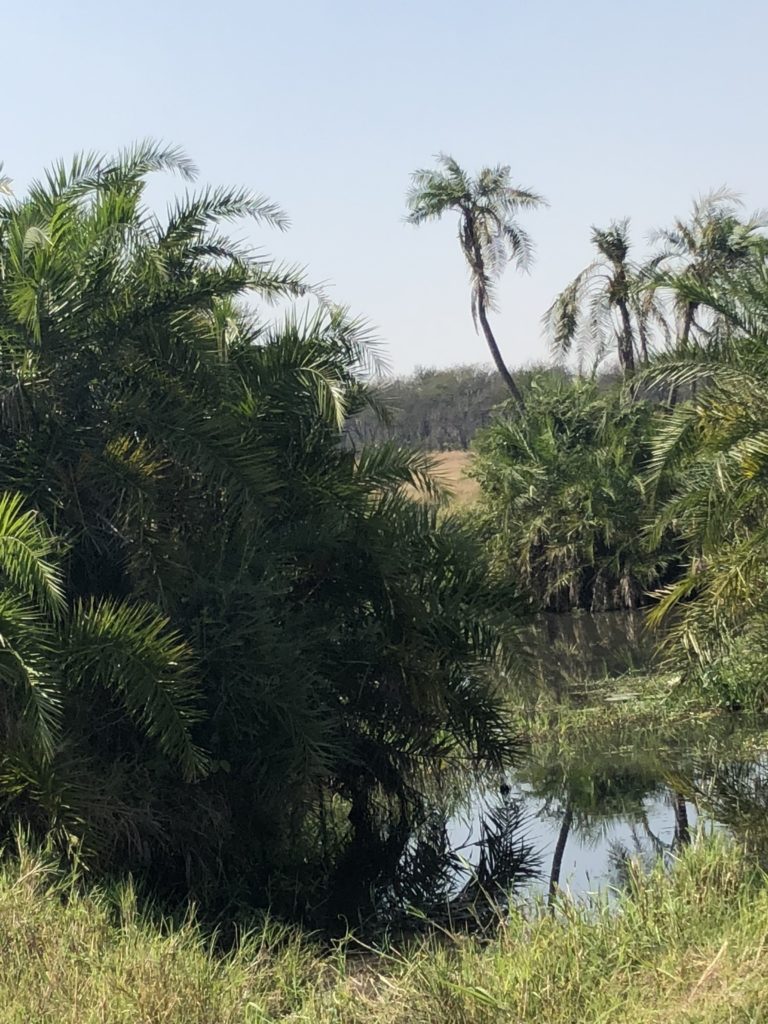
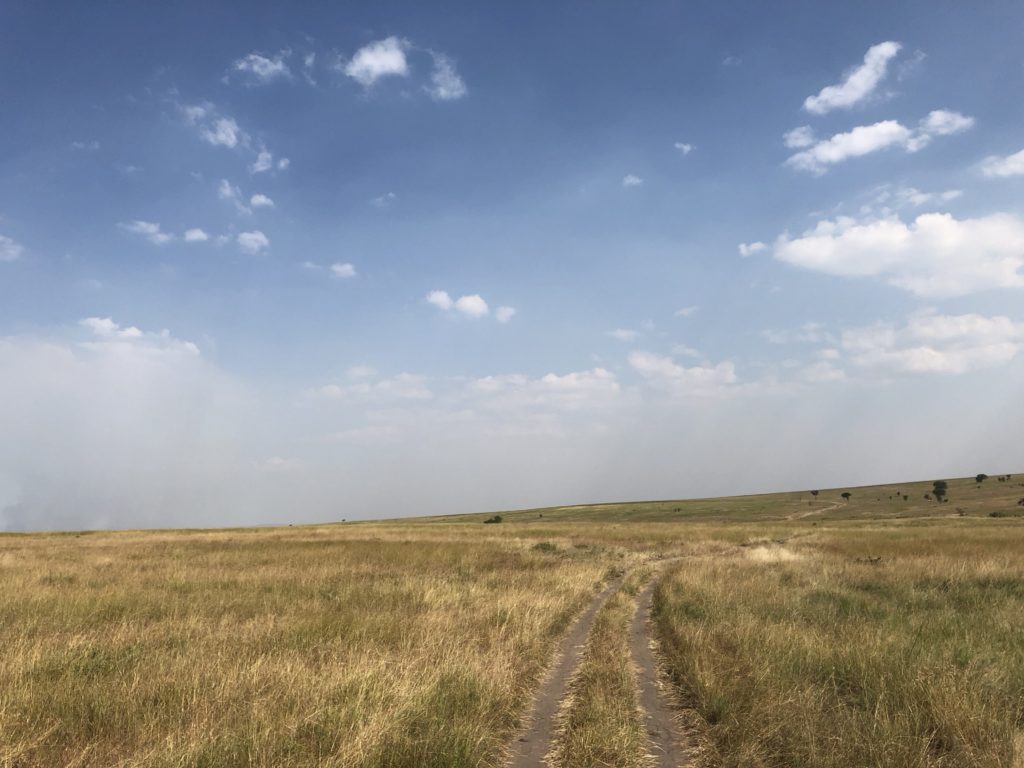
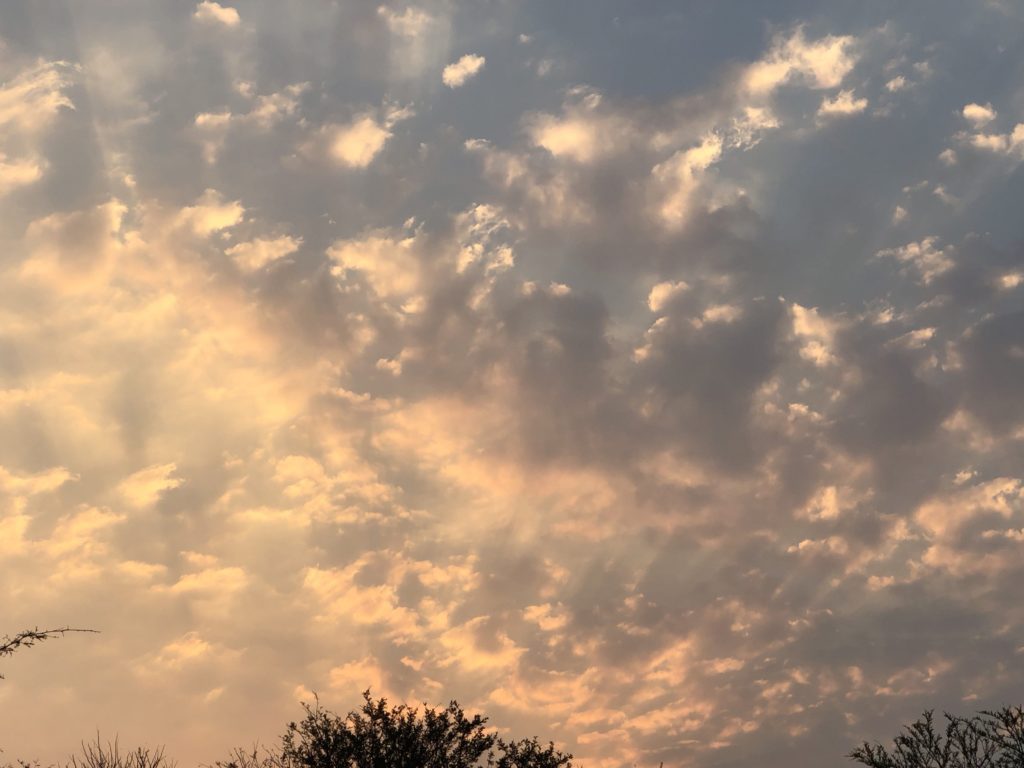
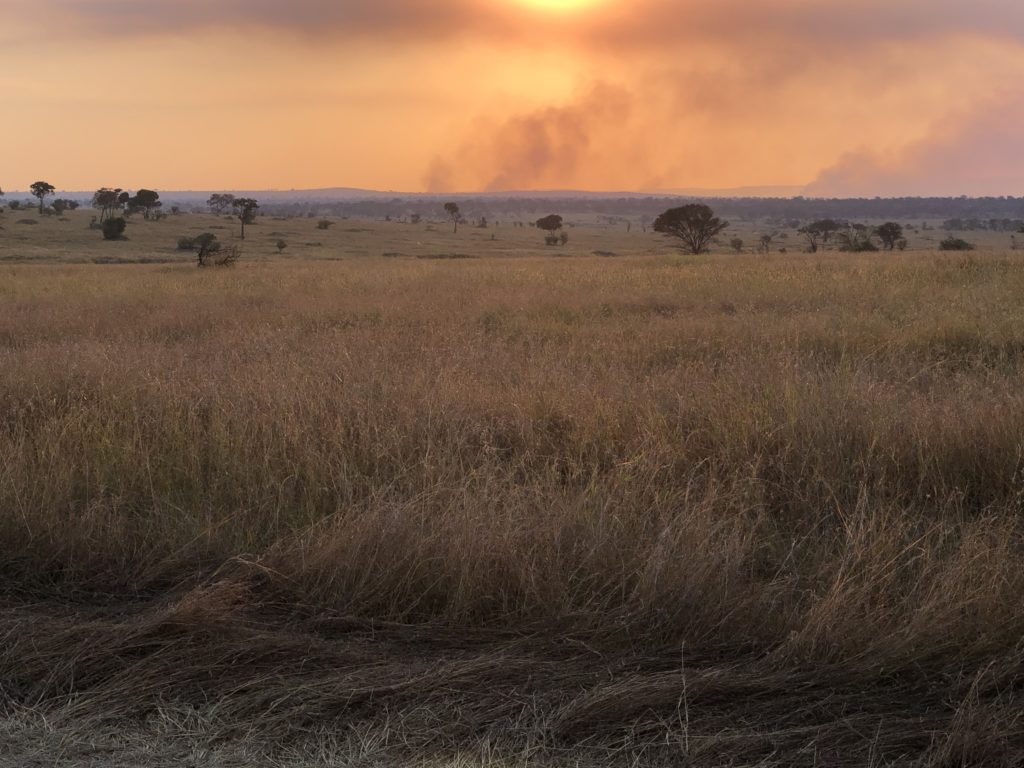
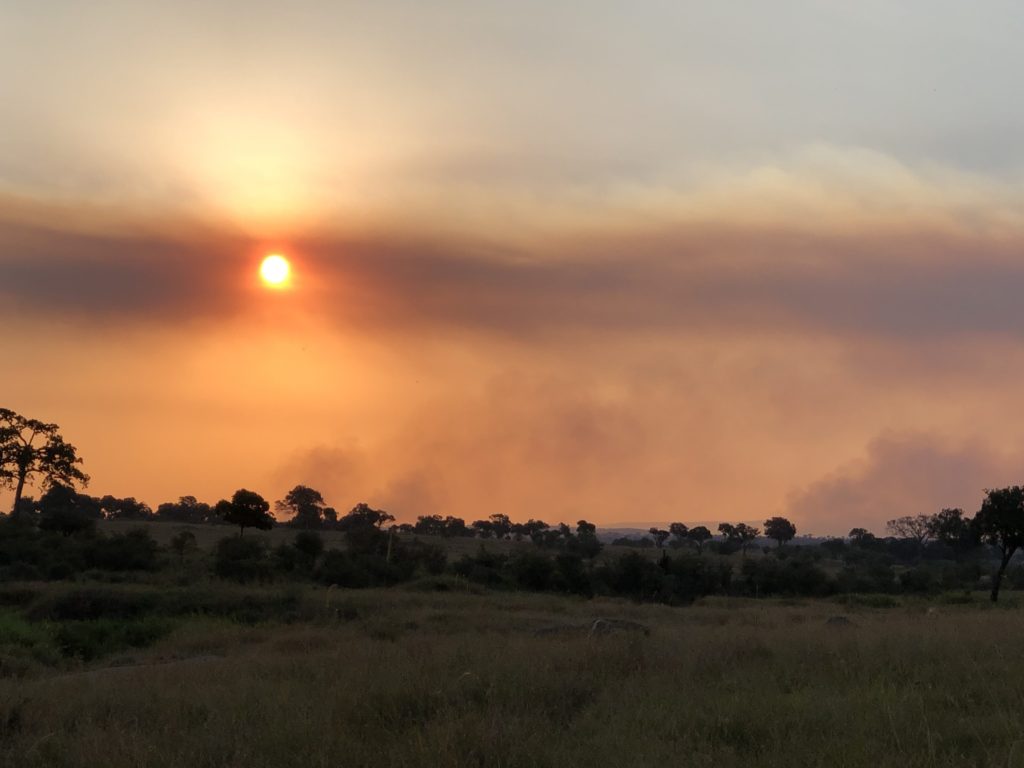 I fell in love with the large rocky formations.
I fell in love with the large rocky formations.
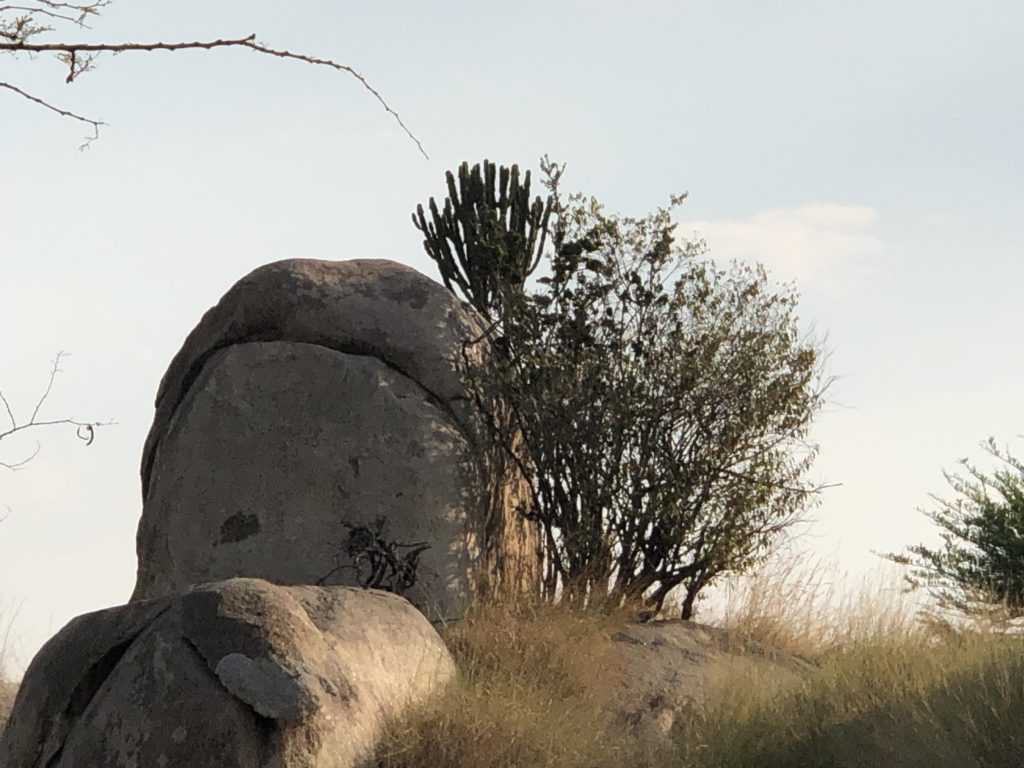

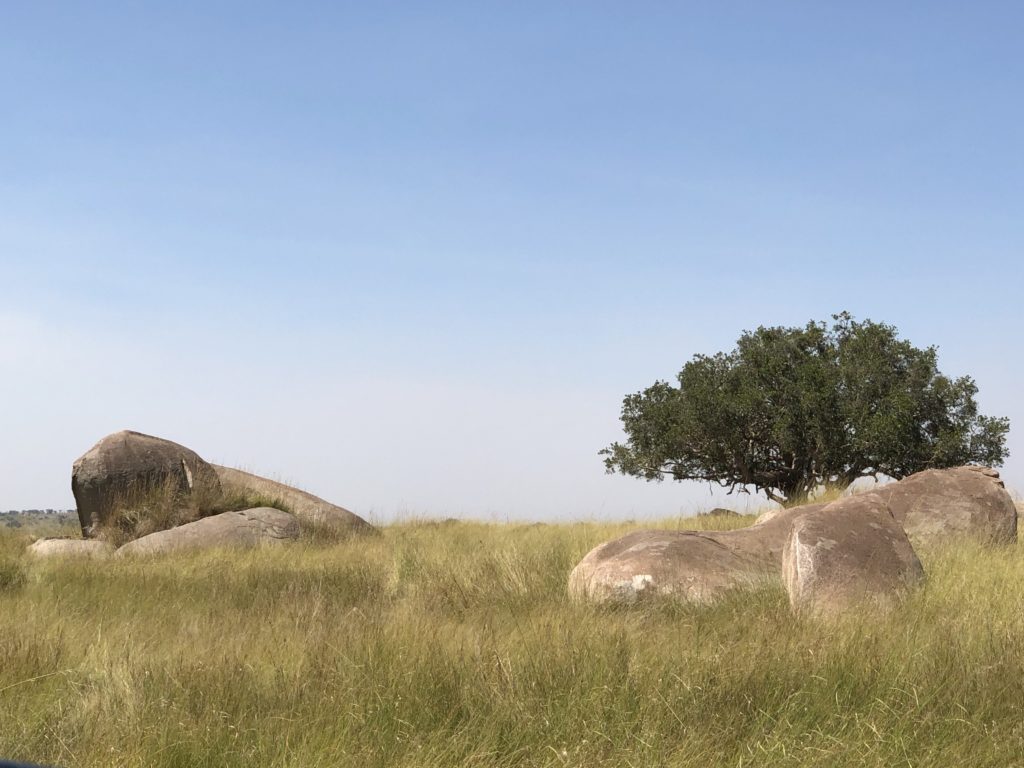
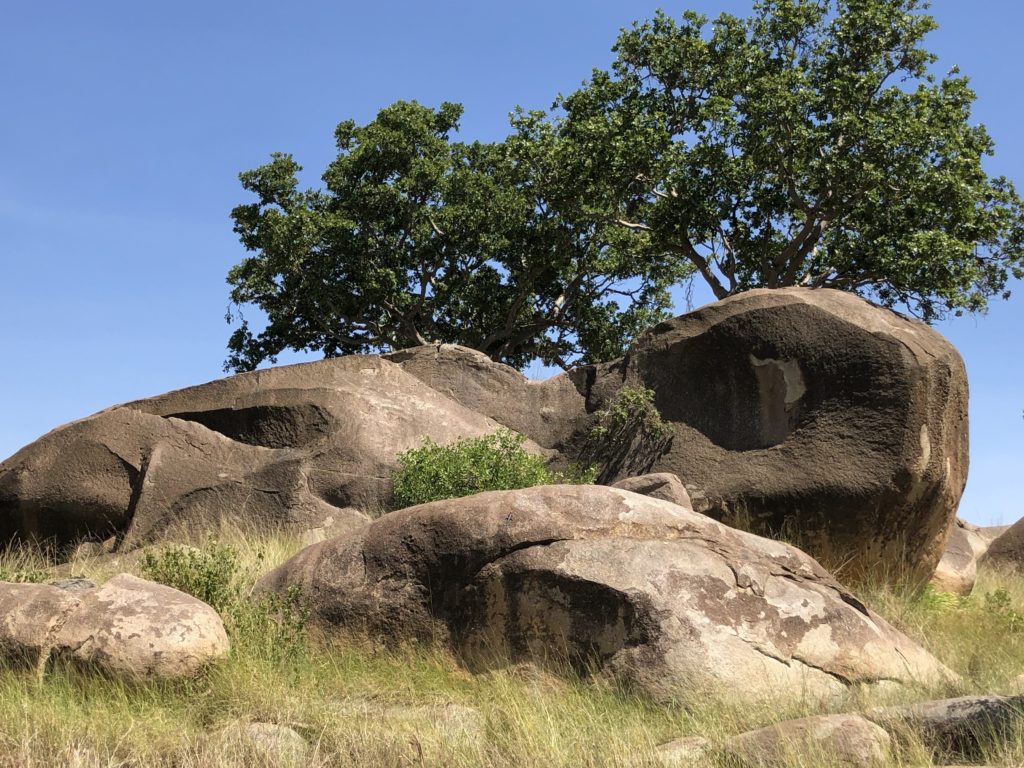 Then there were the hippos lazily relaxing in the Mara River, the crocodiles, the wildebeest gathering on one side of the river indecisive about their crossing, and the eager safari goers on the other side of the river.
Then there were the hippos lazily relaxing in the Mara River, the crocodiles, the wildebeest gathering on one side of the river indecisive about their crossing, and the eager safari goers on the other side of the river.
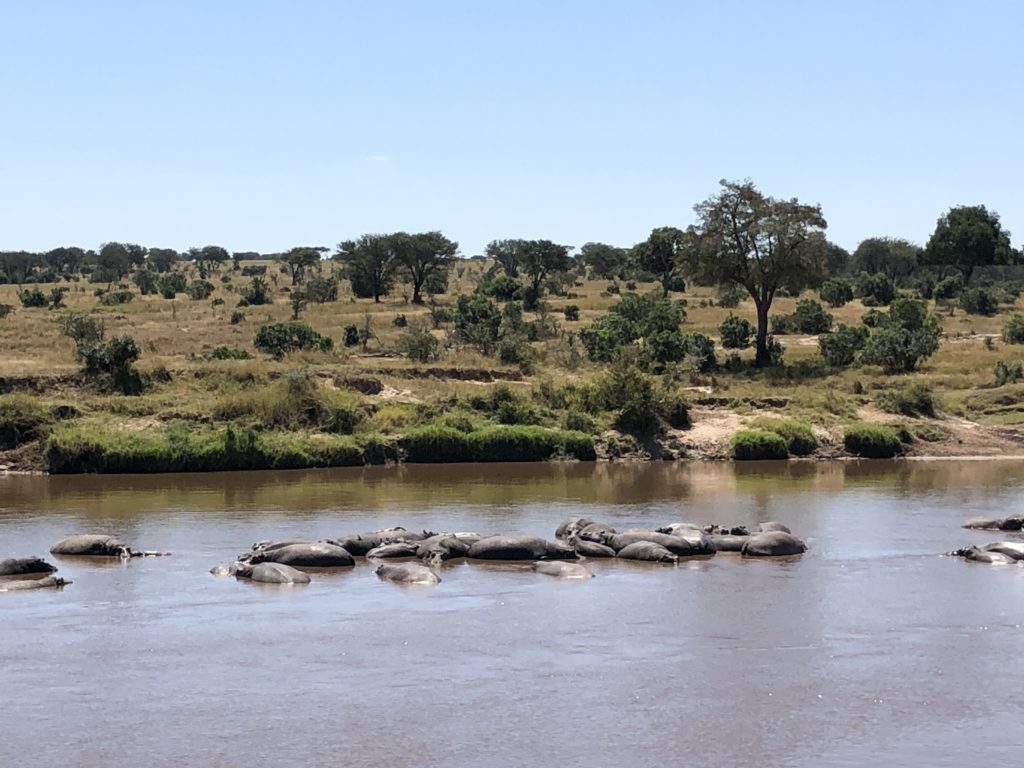
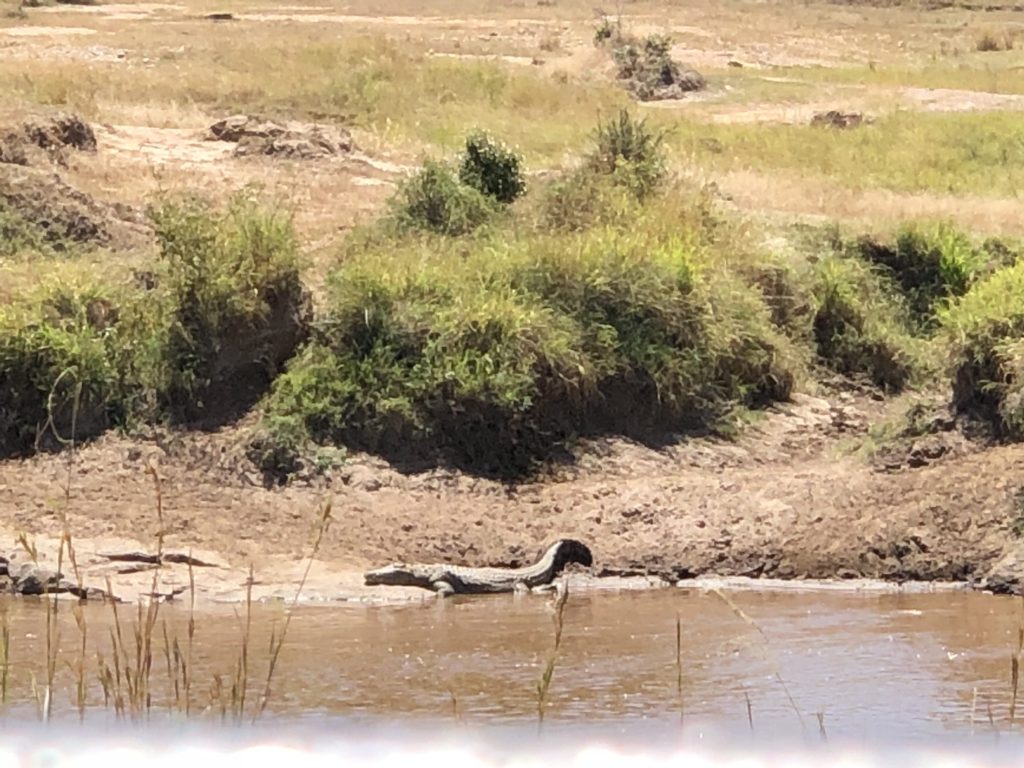

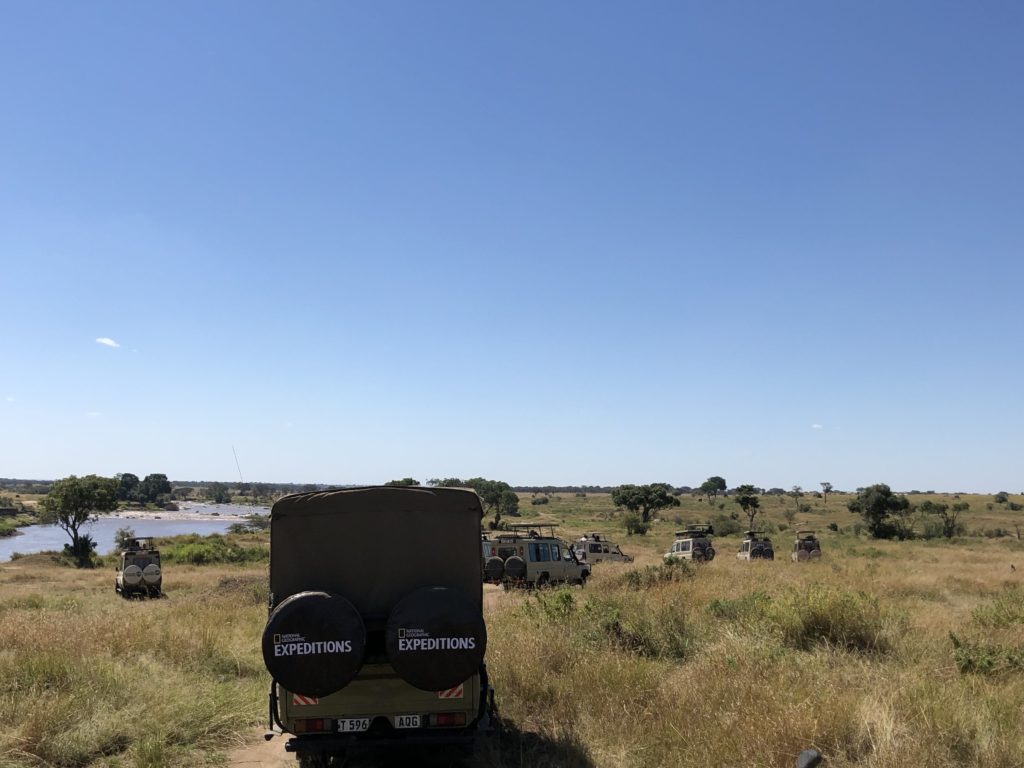 We saw the biggest impala harem (about 80+ females with one male) around a freshly burned patch of grass and the smoke from the controlled fires around the Serengeti.
We saw the biggest impala harem (about 80+ females with one male) around a freshly burned patch of grass and the smoke from the controlled fires around the Serengeti.
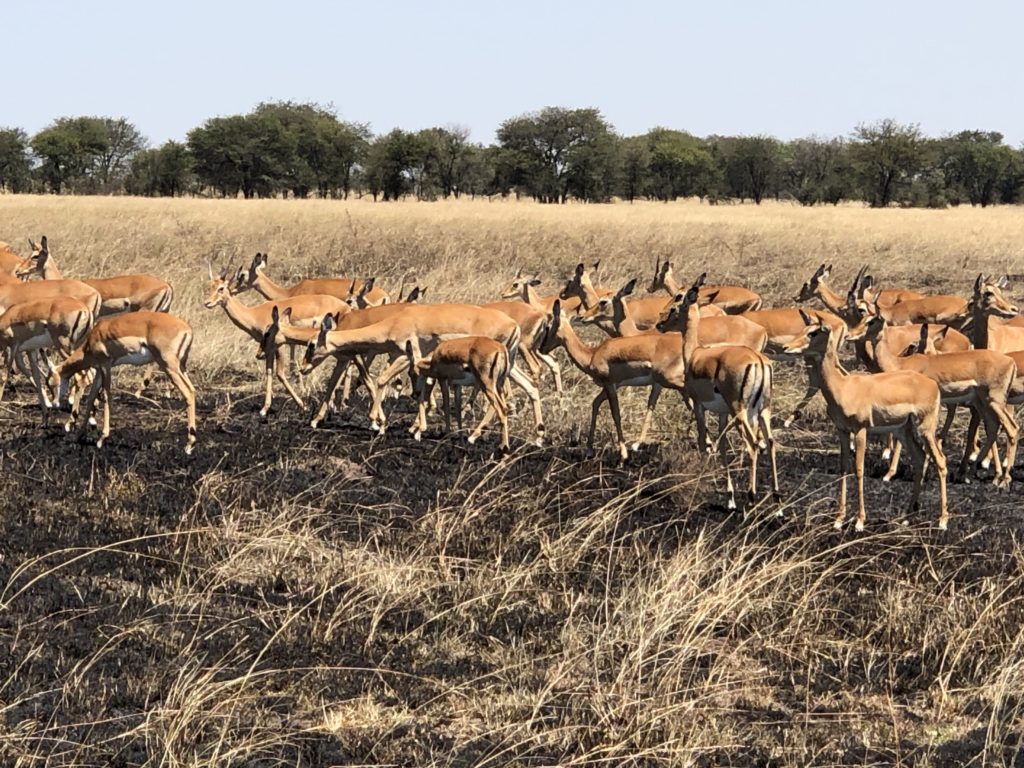
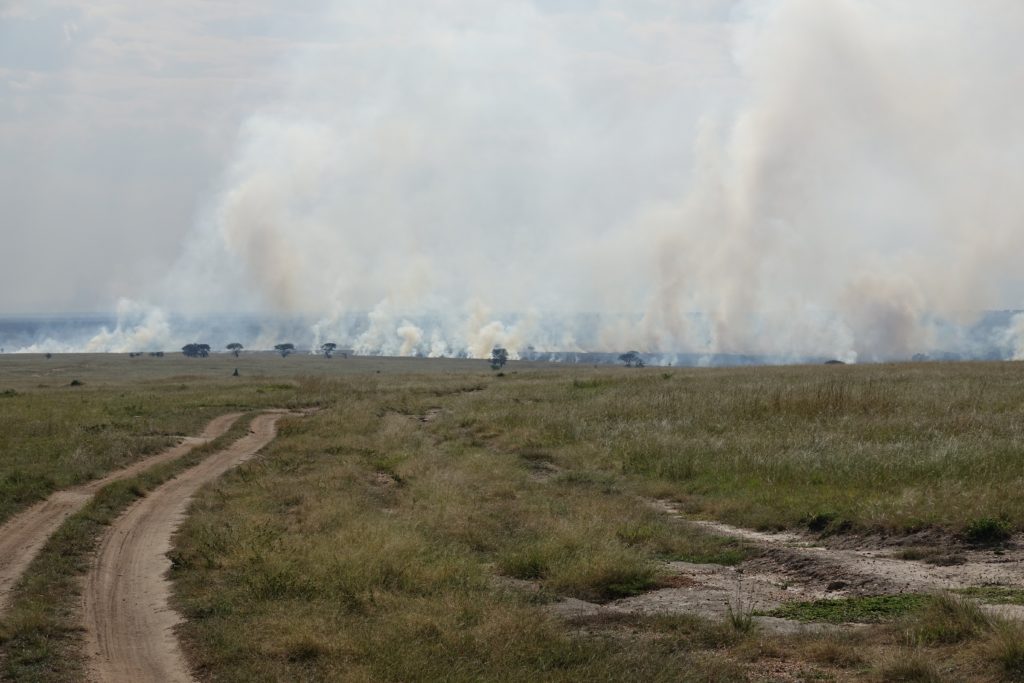
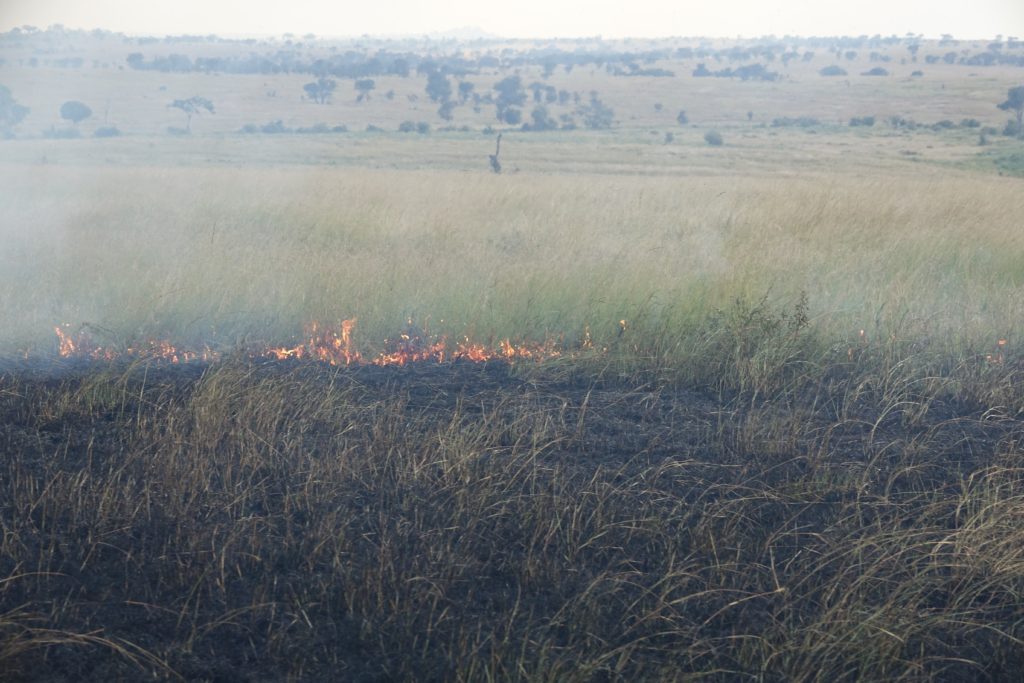 There were the elephants in the river, the spectacular Maasai giraffes, the many wildebeest peacefully grazing in the open or under the shade of a tree, and the zebras.
There were the elephants in the river, the spectacular Maasai giraffes, the many wildebeest peacefully grazing in the open or under the shade of a tree, and the zebras.
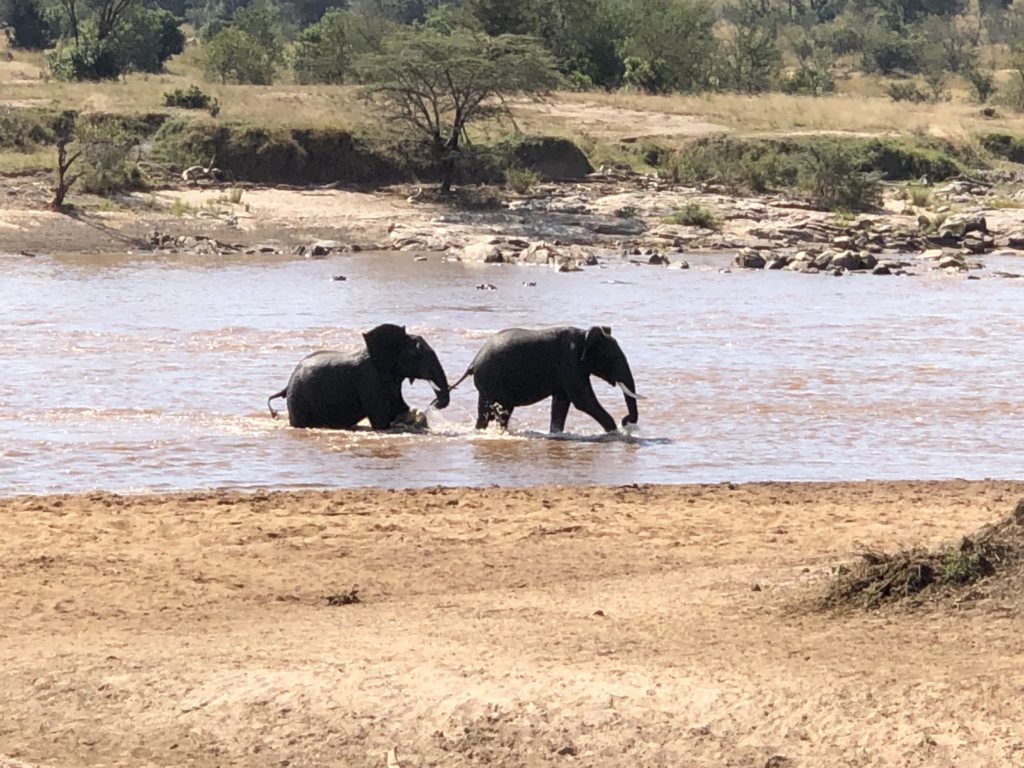
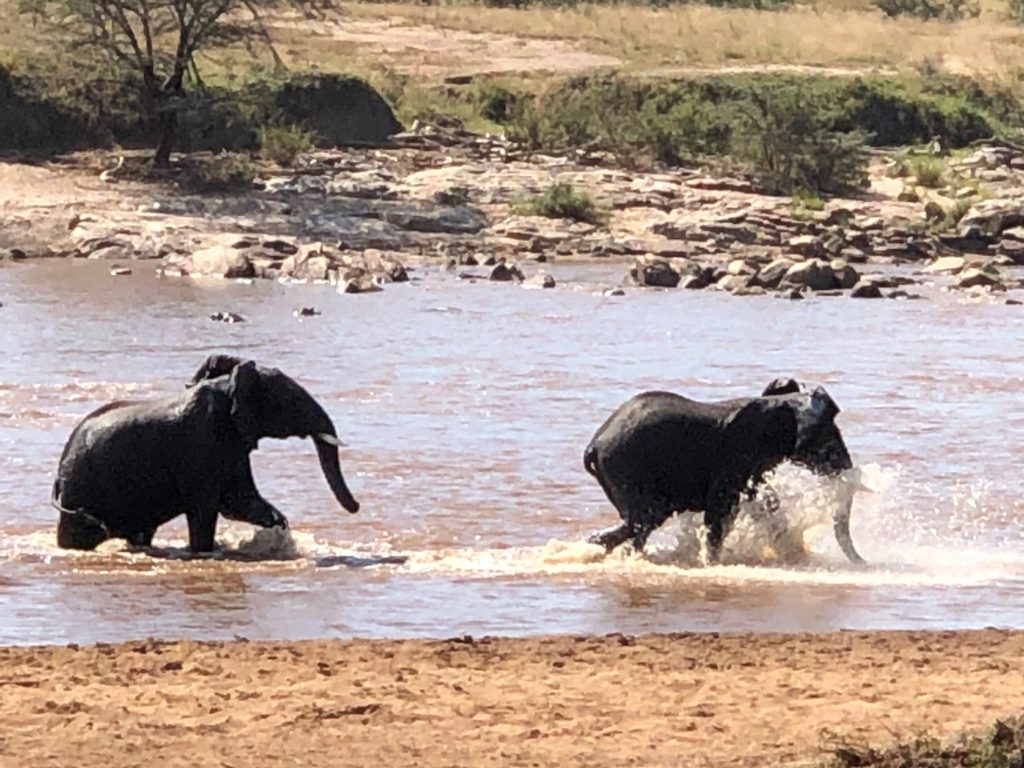
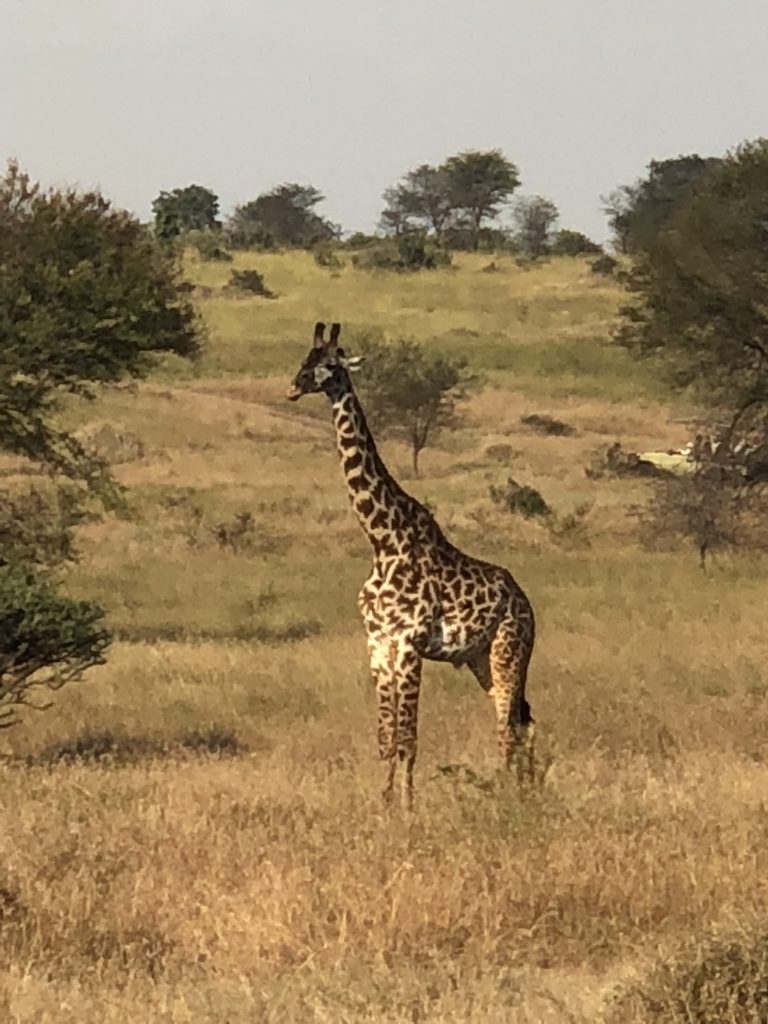
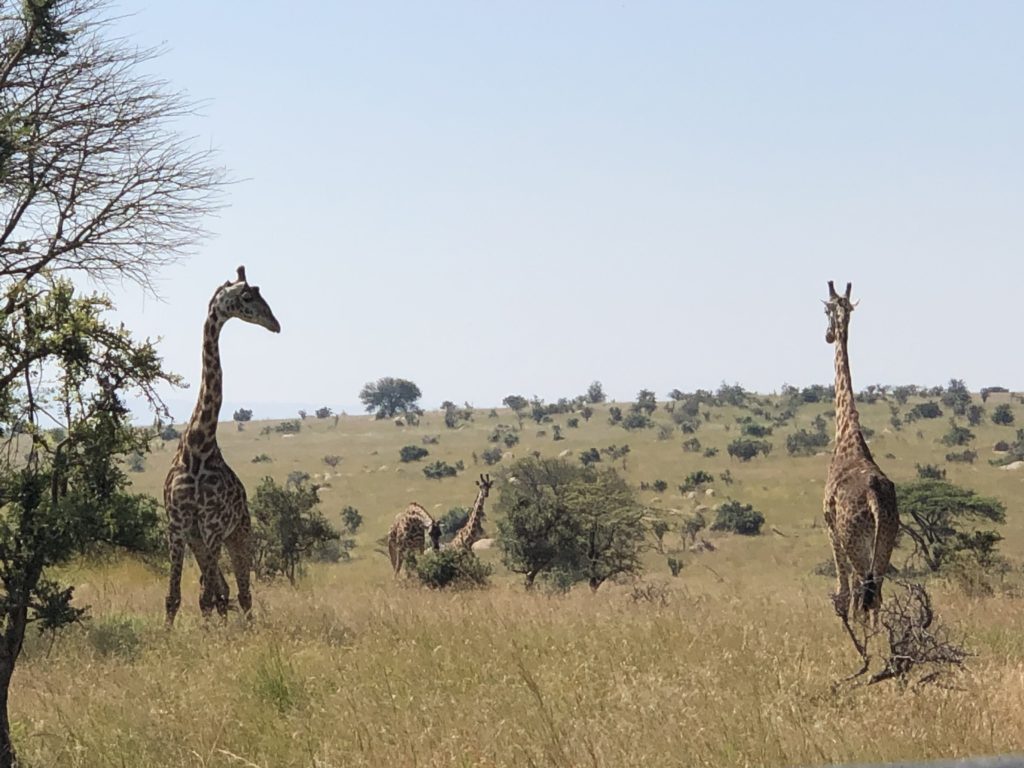
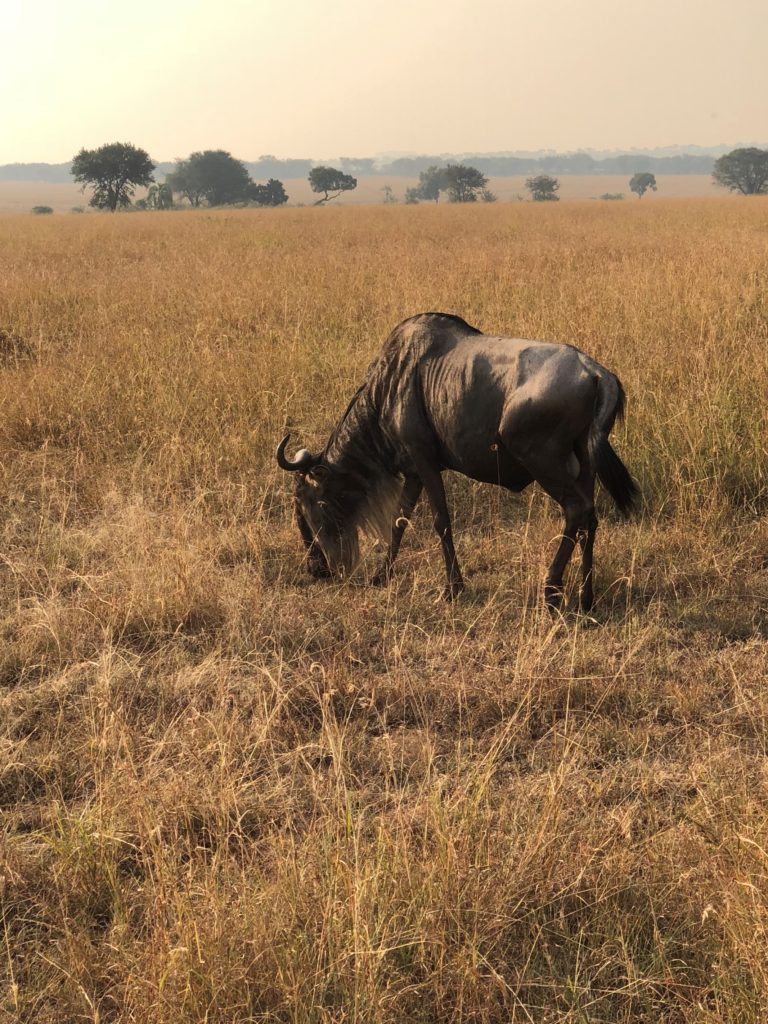
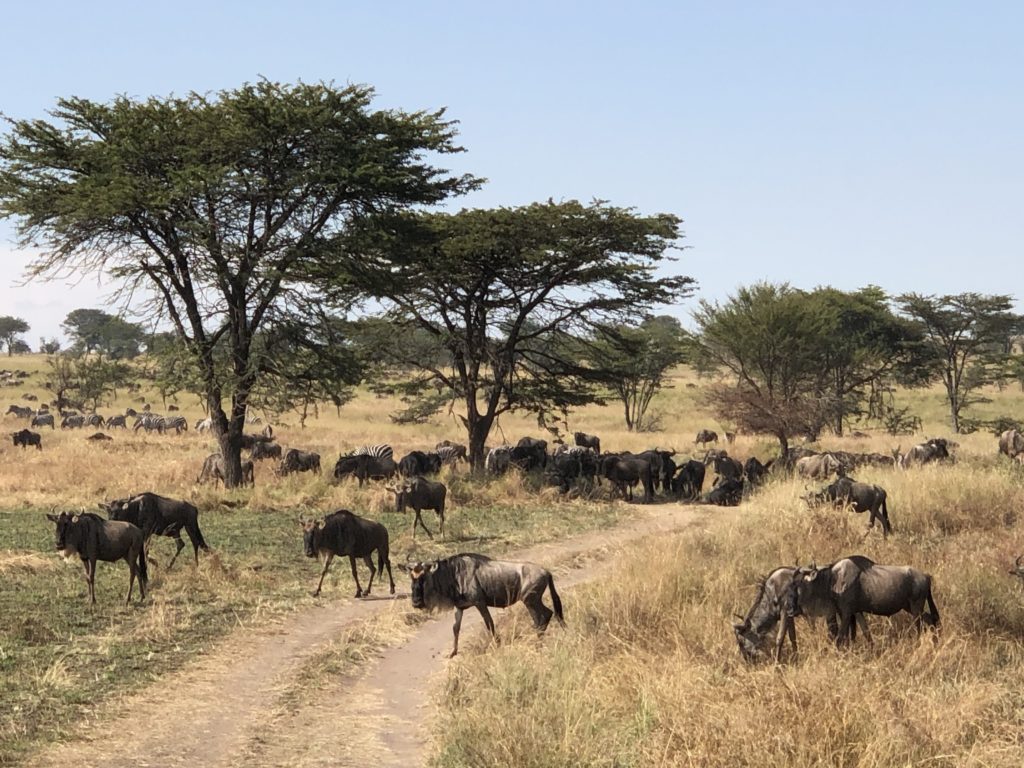

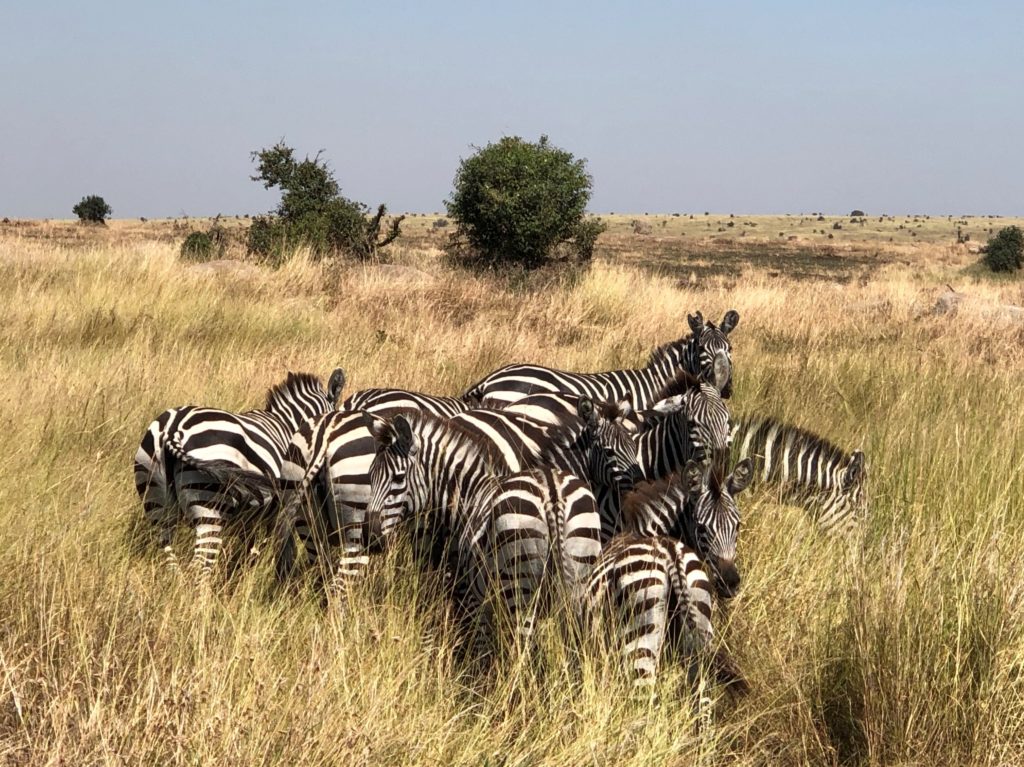
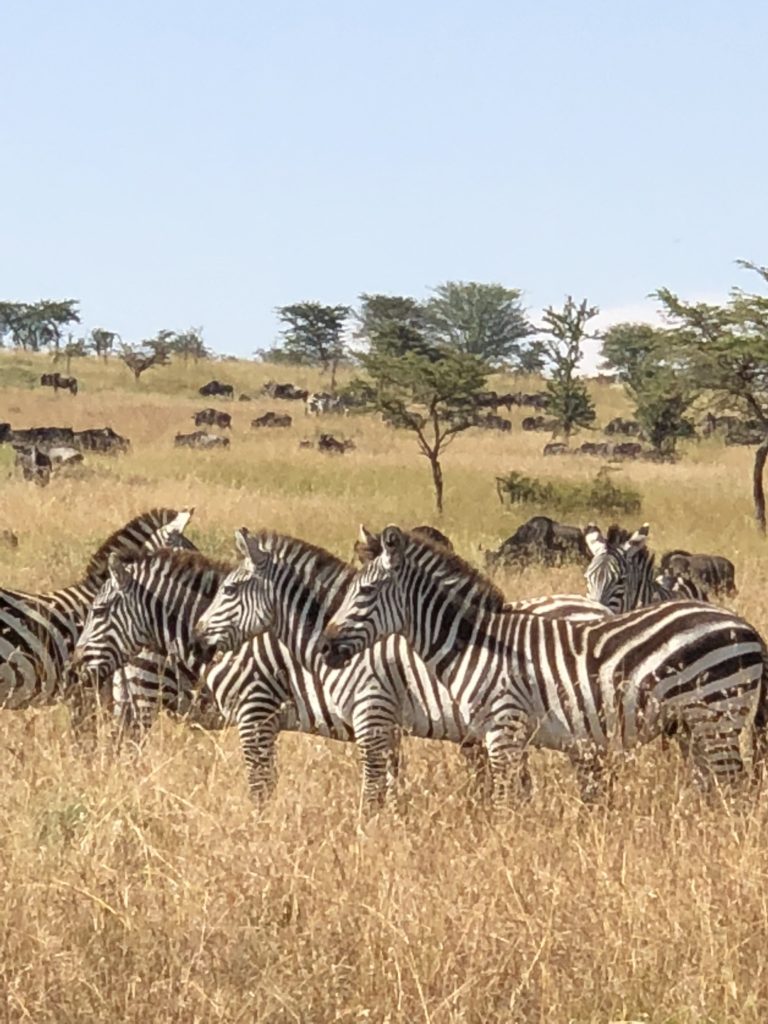 One other exciting thing we did, was an early morning balloon ride over the Serengeti. And this time too, we stayed in a tented camp, which most closely resembled a true camping experience. It even had a weird shower.
One other exciting thing we did, was an early morning balloon ride over the Serengeti. And this time too, we stayed in a tented camp, which most closely resembled a true camping experience. It even had a weird shower.
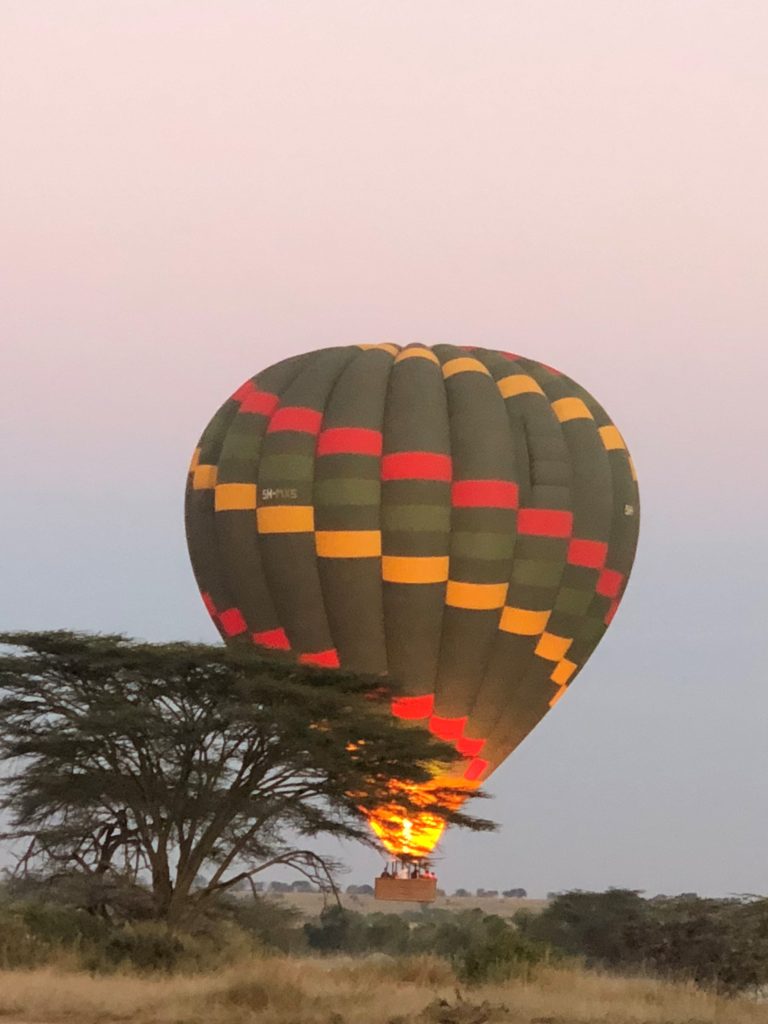
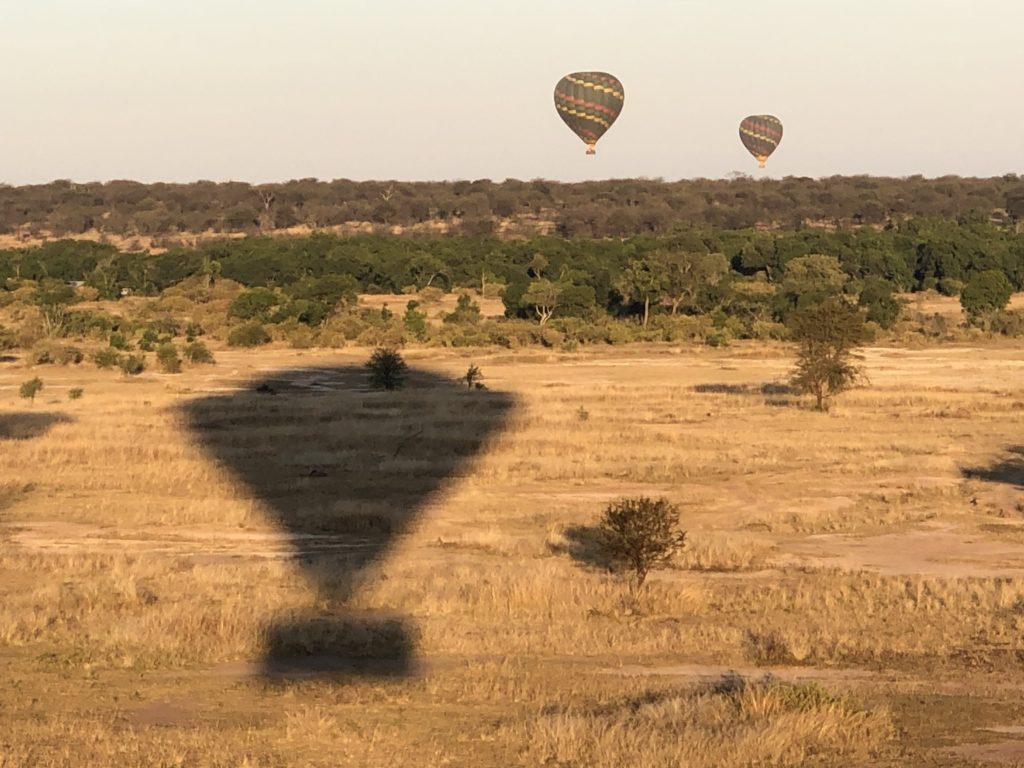
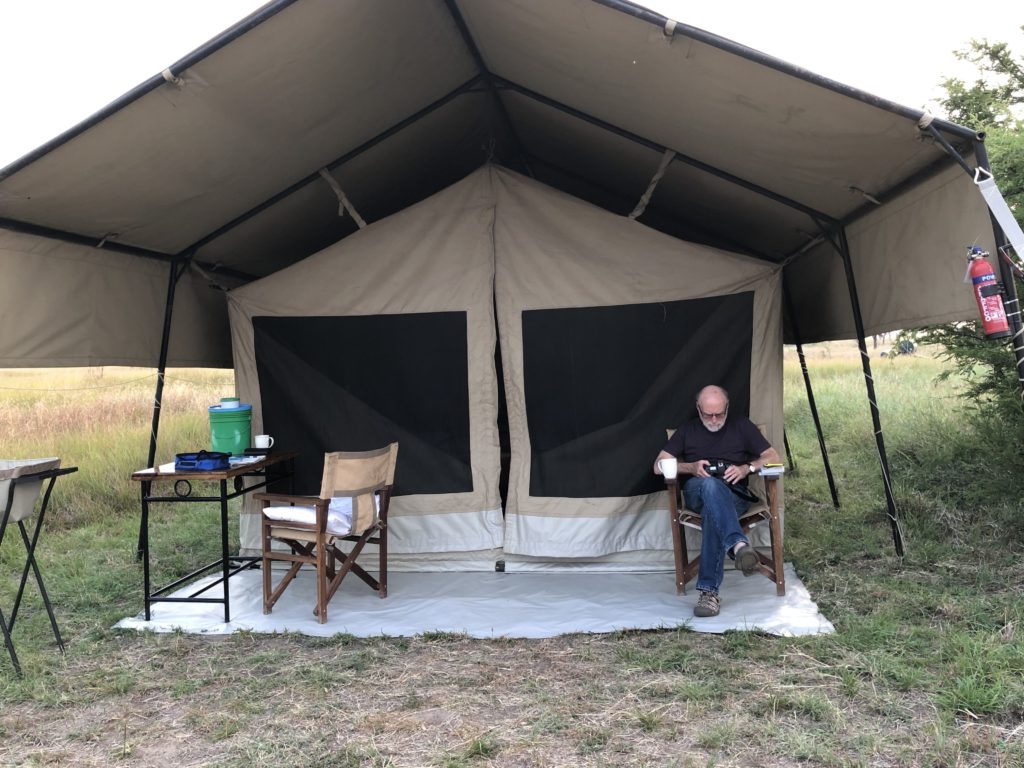 It was time to be on the move again. On the way from our camp to the airstrip, we stopped at a certain spot to see if Steve’s favorite bird, the Secretary Bird was by chance still there. To our great surprise, it was still in the same spot as the day before. Even though at a distance, we were able to observe his morning routine again as he was walking back and forth searching for snakes and lizards in the grass.
It was time to be on the move again. On the way from our camp to the airstrip, we stopped at a certain spot to see if Steve’s favorite bird, the Secretary Bird was by chance still there. To our great surprise, it was still in the same spot as the day before. Even though at a distance, we were able to observe his morning routine again as he was walking back and forth searching for snakes and lizards in the grass.
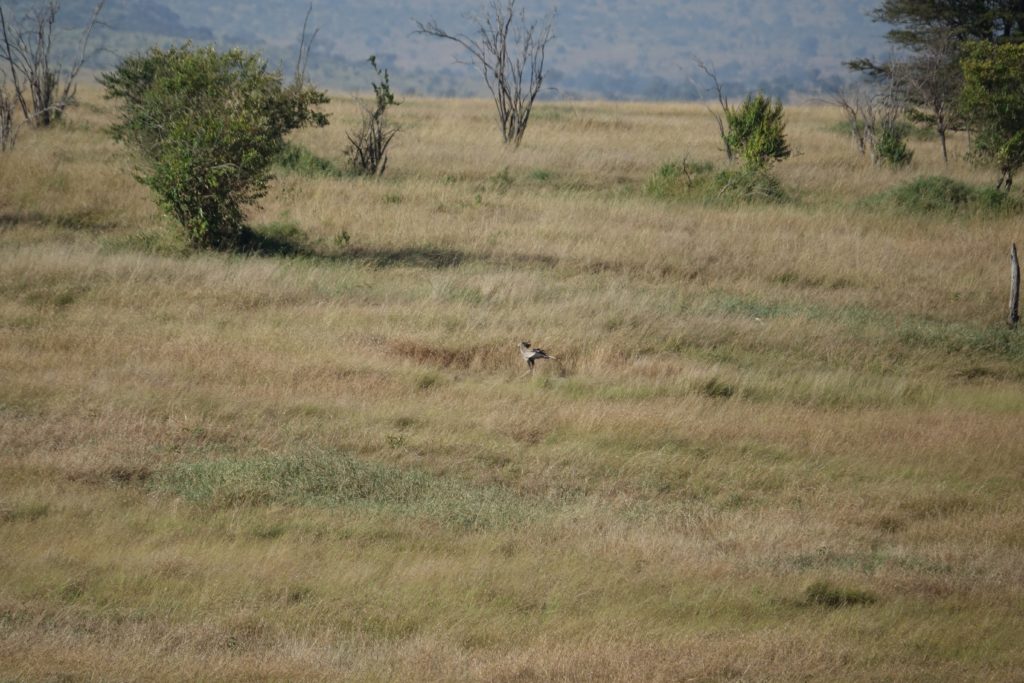 Seph waited with us for the arrival of our small plane, then he was driving to Arusha. We were flying to Manyara, where we were eager to meet our new guide, one of his good friends, who was going to be with us for the next leg of our journey in Tanzania. Thank you, Seph, for everything.
Seph waited with us for the arrival of our small plane, then he was driving to Arusha. We were flying to Manyara, where we were eager to meet our new guide, one of his good friends, who was going to be with us for the next leg of our journey in Tanzania. Thank you, Seph, for everything.

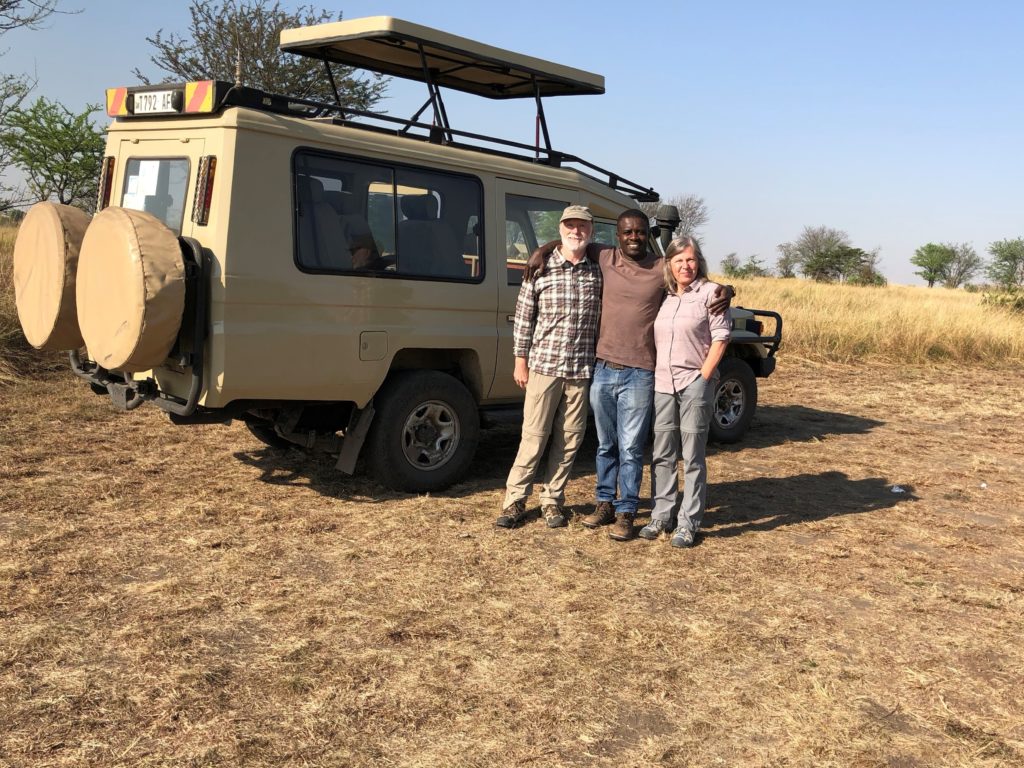






What a neat place! Thank you for sharing so many unique parks. I can’t decide which one I like more. I did have to google what a secretarybird or secretary bird looks like.